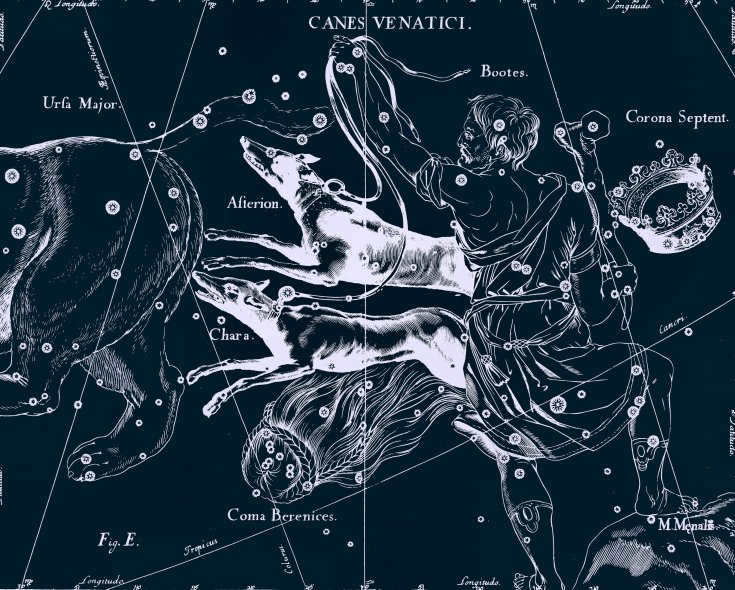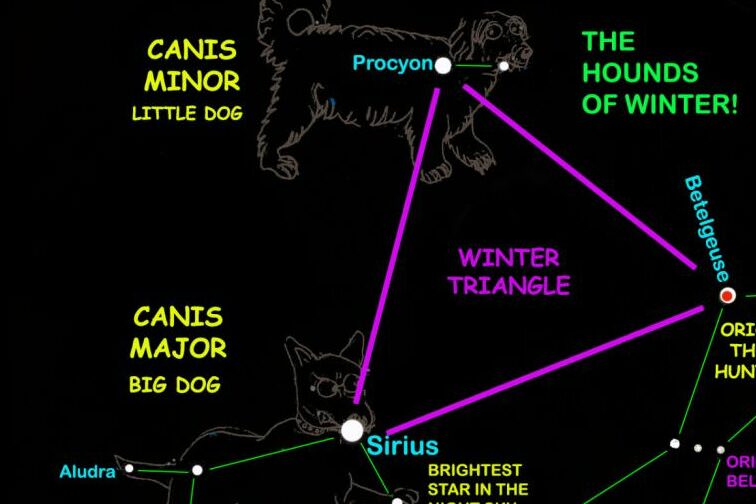The constellation Hound Dogs, also known as Canes Venatici, is situated in the northern hemisphere. Its name is derived from Latin, where “Canes Venatici” translates to “Hound Dogs.” This constellation represents the two dogs, Asterion and Chara, that were said to follow the Wolfhound. While Ptolemy initially included the stars of Hound Dogs in the Big Dipper, it was later recognized as a separate constellation in 1687 by the Polish astronomer Jan Hevelius.
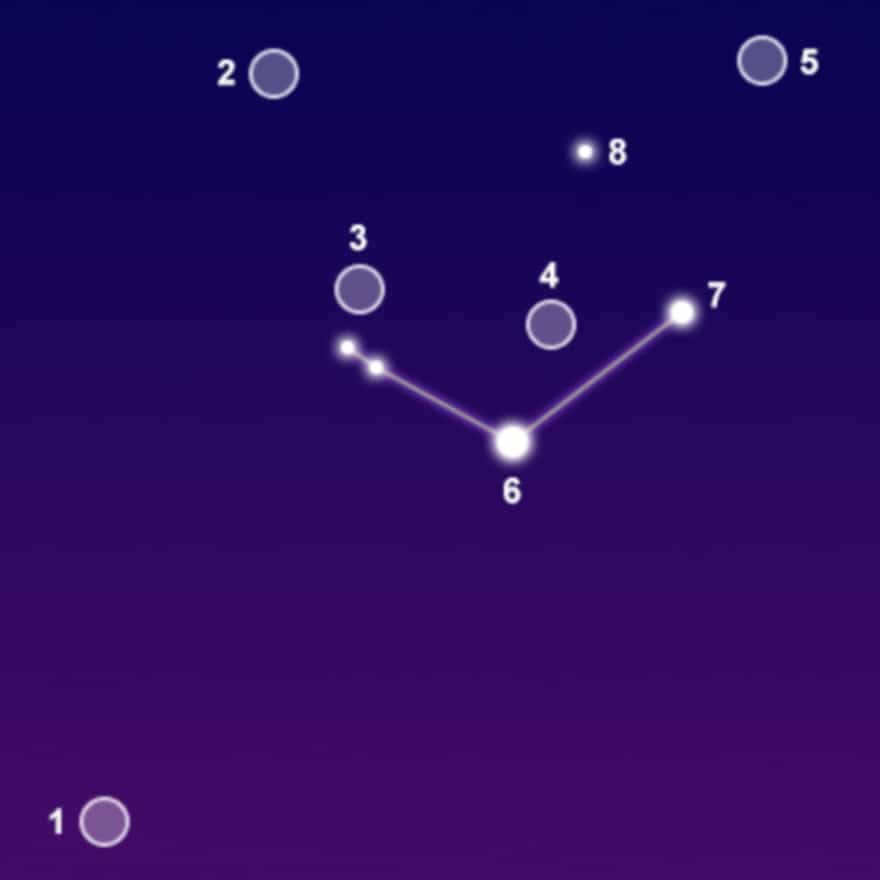
Interesting Information, Location, and Map
The constellation known as Hound Dog holds the 38th position in terms of magnitude and covers an area of 465 square degrees. It can be found in the third quadrant of the northern hemisphere, specifically in the region known as NQ3. This constellation is visible in latitudes ranging from +90° to -40°. It shares its borders with Volopassus, the Big Dipper, and Veronica’s Hair.
Within the Hound Dog constellation, there is only one star that shines brighter than magnitude 3.00. Additionally, two stars are located at a distance of 32.6 light-years (equivalent to 10 parsecs). The brightest star in this constellation is called Carl’s Heart, while the closest star is Hound Dog DG, which is classified as having a spectral class of M4.0Ve and is located 25.89 light-years away. Furthermore, within the Hound Dog constellation, there are a total of 4 stars known to have planets orbiting them.
Exploring the Hound Dog constellation, astronomers have identified 5 Messier objects. These include Messier 3, also known as NGC 5272, the Whirlpool Galaxy (M51, NGC 5194, NGC 5195), the Sunflower Galaxy (M63, NGC 5055), Messier 94 (NGC 4736), and Messier 106 (NGC 4258).
January is the month when a meteor shower takes place. This meteor shower is associated with the constellation known as the Big Dipper, which is also home to various other constellations such as the Wolf, Veronica’s Hair, Dragon, Lynx, Big Dipper, Little Dipper, Giraffe, Northern Crown, and Little Lion.
Within this constellation, you can find notable stars like the Heart of Charles and Y of the Hound Dogs, as well as celestial objects like NGC 4631, also known as the “Hockey Sticks” (which includes NGC 4656 and NGC 4657), NGC 449, and several spiral galaxies such as NGC 5033, NGC 5005, NGC 4151, NGC 5371, and the dwarf NGC 4618. To locate the Hound Dog constellation, refer to the star map diagram.
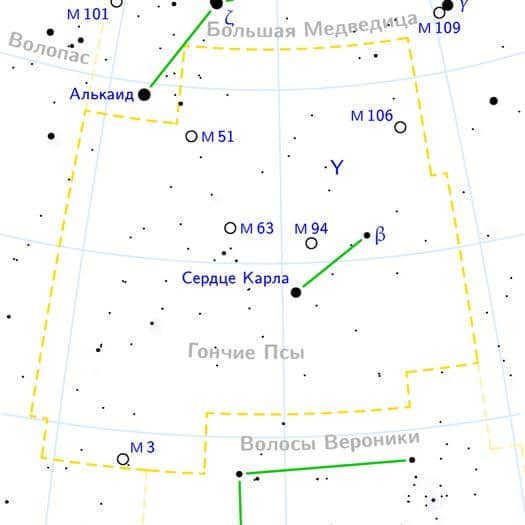
Origin of the constellation
During the medieval period, the constellation was associated with a pair of canines being led by Volopas. When Ptolemy compiled his list, he attributed many of the stars in the Hound Dogs constellation to Volopas. However, a translation error occurred. Ptolemy originally wrote “group of Hound Dogs,” but the translator mistakenly interpreted the Arabic phrase as “spear with a hook.” When the translation was further converted into Latin, the Arabic word “kullāb” was misinterpreted as “kilāb” – meaning dogs.
Thus, in 1533, Volopassus was showcased alongside a pair of canines, and during the 17th century, German astronomers Peter Apian and Jan Hevelius distinguished these dogs as a distinct constellation. The canine situated in the northern region was dubbed Asterion, derived from the Greek term for “little star,” while the canine positioned in the southern region was named Chara, meaning “joy.” Eventually, Chara became associated with the star Beta of the Hound Dogs.
The primary celestial bodies are.
The most prominent star in the constellation is known as the Heart of Charles (Alpha of the Hound Dogs), boasting an apparent magnitude ranging from 2.84 to 2.98 and located approximately 110 light-years away. This star is actually a binary system, consisting of two stars separated by a distance of 19.6 arc seconds.
Alpha-2 of Hound Dog, the brighter component of the binary system, is a hot blue-white star classified as an A0 spectral type. It is also categorized as an Ap/Bp star, meaning it is overabundant in certain metals. This star possesses an exceptionally strong magnetic field, approximately 5000 times stronger than that of Earth. Additionally, its atmosphere contains high concentrations of europium, mercury, and silicon. Alpha-2 of Hound Dog serves as the prototype for the variable star class known as Alpha-2 Hound Dog types. These stars exhibit varying luminosity due to the presence of large starspots caused by their magnetic fields.
The companion star, Alpha-1 of the Hound Dogs, is an F-type main-sequence star with an apparent magnitude of 5.60.
Beta Hound Dog (Chara) is the second most luminous star in the constellation. It is a yellow main-sequence dwarf of the G-type, located 27.4 light-years away. The original name Chara was given to the southern dog, which means “joy” in Greek. The star has a visible magnitude of 4.26 and shares similarities with the Sun in terms of age, mass, and evolutionary stage, earning it the nickname “solar twin”.
Y of the Hound Dogs (Hound Dog Gamma) is a semi-regular variable star with an apparent magnitude that ranges from 4.8 to 6.3 over a period of 160 days. It is the brightest J-star, which are rare carbon stars known for their abundance of carbon-13. This star is located 711 light years away.
La Superba, one of the most crimson stars, was christened by Angello Secchi, an Italian astronomer from the 19th century, who marveled at its luminous magnificence. It is believed to be in the advanced stages of fusing secondary fuel, specifically helium and carbon. This extraordinary star is shedding mass at a remarkably rapid pace and is enveloped by a ring of expelled matter. In due time, it will undergo a cataclysmic collapse of its outer layers, resulting in the birth of a nebula and the transformation of the star itself into a white dwarf.
Hound Dog AM is an irregular cataclysmic variable star that experiences unpredictable brightening. It has an apparent magnitude of 14.18 and is located approximately 2000 light years away. This type of star often consists of a binary system, with a white dwarf and a secondary star transferring mass. The gravity of the white dwarf distorts the secondary star and strips it of its material. The donated material from the secondary star typically forms an accretion disk, mainly composed of helium, around the white dwarf. These stars are also fascinating because they emit gravitational waves.
The RS Hound Dog variable star is a prototype for its class, representing close binary stars that demonstrate changes in luminosity due to active stellar chromospheres. The variations in brightness usually correspond to the orbital period of the stellar system. The luminosity of these stars can fluctuate by up to 0.2 magnitudes.
Celestial bodies
Messier 3 (NGC 5272) is a cluster of stars called a globular cluster that is located 33,900 light-years away. It is one of the most massive and luminous clusters, consisting of approximately 500,000 stars. The cluster has a visible magnitude of 6.2 and is estimated to be around 8 billion years old. It was discovered in 1784 by the astronomer William Herschel.
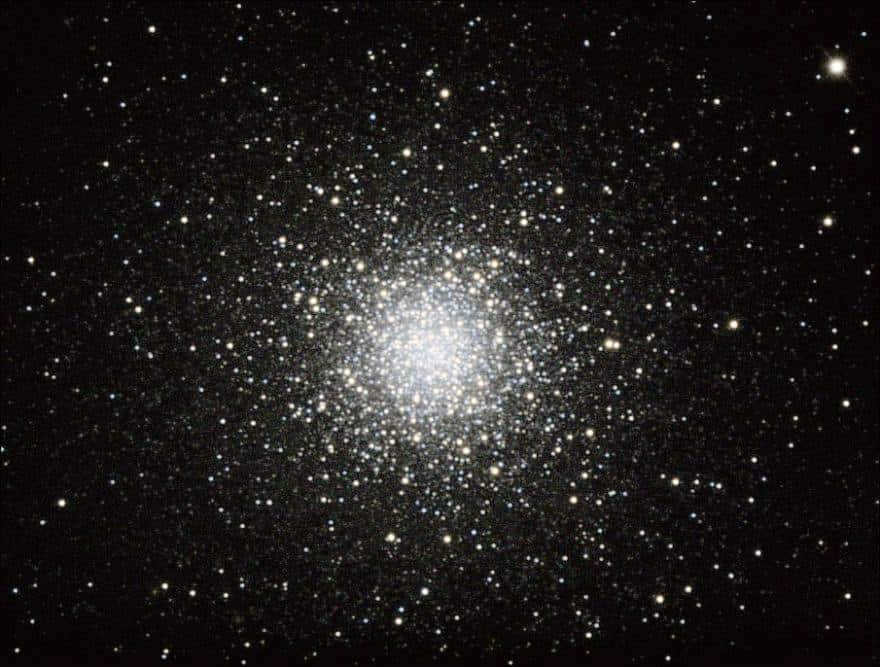
The Whirlpool (Messier 51, NGC 5194) is a well-known galaxy in the night sky, famous for its grand spiral structure. It is located 31 million light-years away from the Milky Way. With a visible magnitude of 8.4, it can even be observed using binoculars. This magnificent galaxy has a bright circular disk with a radius of 38,000 light-years.
Also referred to as Messier 51a, the Whirlpool galaxy interacts with NGC 5195 (Messier 51b), a dwarf galaxy in the constellation of Hound Dog. These two galaxies are connected by a tidal bridge filled with interstellar dust, which can be seen in the background of the dwarf galaxy. Due to this interaction, NGC 5195 has a highly distorted shape.

The presence of the Whirlpool Galaxy was initially detected in 1774 by Charles Messier. In 1781, the astronomer Pierre Meschen, hailing from France, discovered the neighboring NGC 5195. A noteworthy event occurred in 2005 when the supernova SN 2005cs reached its peak brightness, registering an apparent magnitude of 14 within the vicinity of the Whirlpool Galaxy.
The Whirlpool Galaxy cannot be observed beyond the northern latitude of 43°. However, its location can be easily ascertained by venturing 3.5° southeast of Benetnash, the easternmost star in the Big Dipper asterism and the tip of the tail in the constellation bearing the same name.
Among the M51 group of galaxies, which encompasses the Sunflower Galaxy (M63), NGC 5195, along with NGC 5023, NGC 5229, UGC 8313, and UGC 8331, the Whirlpool Galaxy takes precedence as the brightest member.
The Sunflower Galaxy (Messier 63, NGC 5055) is the second most luminous celestial body in the M51 cluster, following the Whirlpool Galaxy. It is classified as a spiral galaxy and has a visual magnitude of 9.3, located approximately 37 million light-years away.
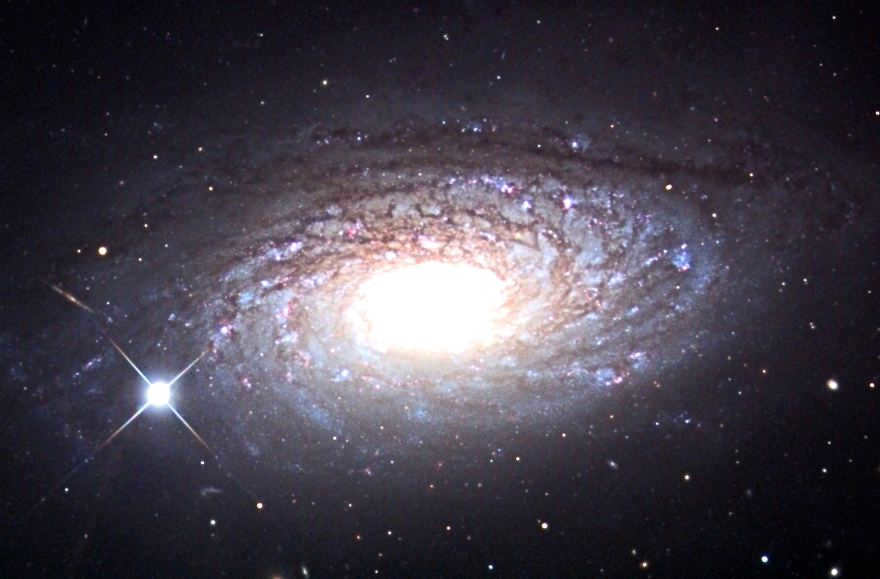
The year 1779 marked the discovery of the Sunflower Galaxy by Pierre Mechene, and later on, Charles Messier included it in his renowned catalog. Within its boundaries, a supernova event was observed in 1971.
Messier 94 (also known as NGC 4736) is a spiral galaxy that Pierre Mechene discovered and Messier cataloged. It possesses an apparent magnitude of 8.99 and is located approximately 16 million light-years away. This galaxy is particularly noteworthy for its dual ring structures. The first ring, often referred to as the star-shaped ring, has a diameter of 70”. It serves as a hub for intense star formation. The second ring, measuring 600”, is a complex arrangement of spiral arms.

It is one of the most luminous galaxies in the M94 group, which consists of 16-24 galaxies located within the Local Galaxy Supergroup. Among the notable galaxies in this group are the NGC 4214 irregular junction galaxy, the NGC 4244 spiral galaxy (also known as Caldwell-26) near the Beta Hound Dog star, the NGC 4395 low surface brightness spiral galaxy, the NGC 4449 irregular galaxy (also known as Caldwell-21), and the UGC 8320 dwarf irregular galaxy.
Messier 106 (also known as NGC 4258) is a spiral galaxy that was discovered in 1781 by Pierre Mechene. It is located approximately 22-25 million light-years away. This galaxy is known for its unusual emission lines and its ability to produce X-rays. It is possible that part of this galaxy is being drawn into a supermassive black hole. The visible visual magnitude of Messier 106 is 9.1.
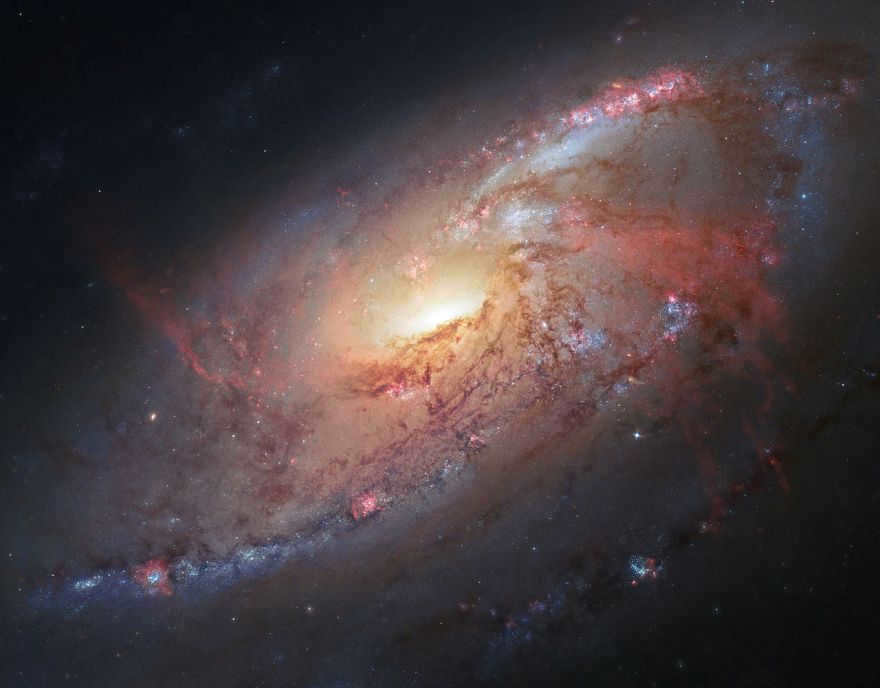
The M51 group is composed of several remarkable galaxies. NGC 5023, although relatively isolated, is considered to be a part of this group. It is a spiral galaxy that spans an impressive 49,000 light-years. Over 200 of its stars have apparent magnitudes exceeding 23.5. Its distance from us ranges from 17.6 to 26.1 million light-years. The total apparent magnitude of NGC 5023 is 12.82.
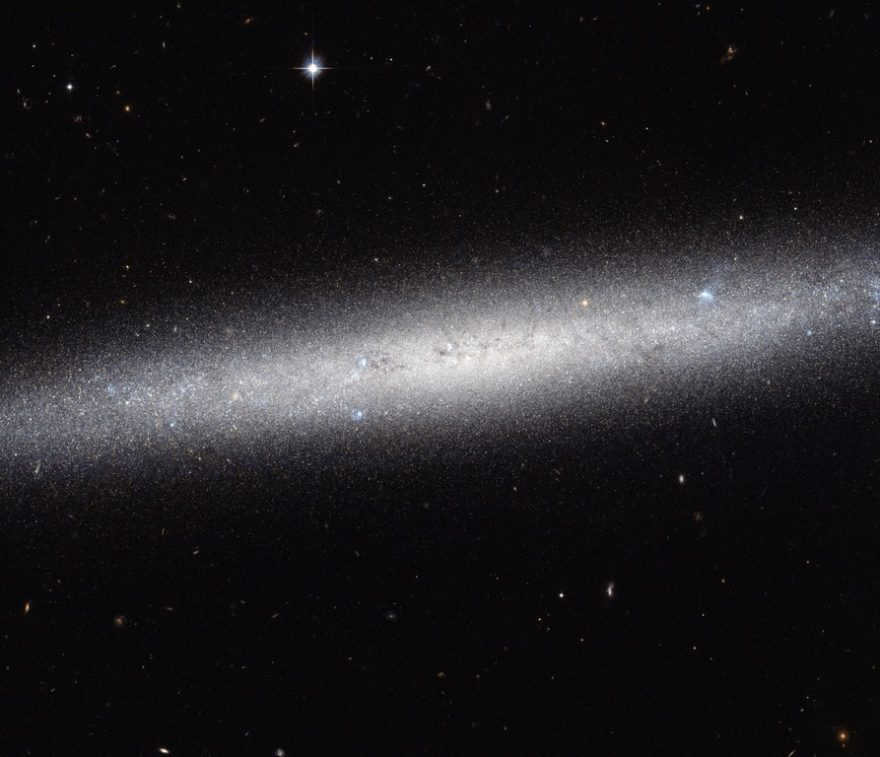
UGC 8331 is an irregular galaxy located 19.7-26.8 million light-years away. Its apparent magnitude measures 14.61.
UGC 8313 represents a spiral galaxy with a diameter of 19,000 light-years. It is recognized as a companion galaxy to the Sunflower Galaxy. The visible magnitude of UGC 8313 is 14.4.
NGC 5229 stands as a spiral galaxy that exists in isolation from the rest of its group. Its age is estimated at 13.7 billion years, and it has a diameter of 23,000 light-years. The apparent magnitude of NGC 5229 is 14.3.
NGC 4631 (also known as Caldwell-32 and Arp 281, and designated PGC 42637) is a spiral galaxy situated 30 million light-years from Earth. With an apparent magnitude of 9.8, it is easily observable from telescopes. This galaxy has earned the nickname “whale” due to its unique and slightly distorted shape, which bears a resemblance to the marine mammal. One of the most remarkable features of NGC 4631 is its central region, which exhibits a high rate of star formation. This intense star formation activity gives rise to the emission of X-ray and spectral radiation. Additionally, NGC 4631 is surrounded by a vast and diffuse corona of X-ray emission that envelops the entire galaxy.
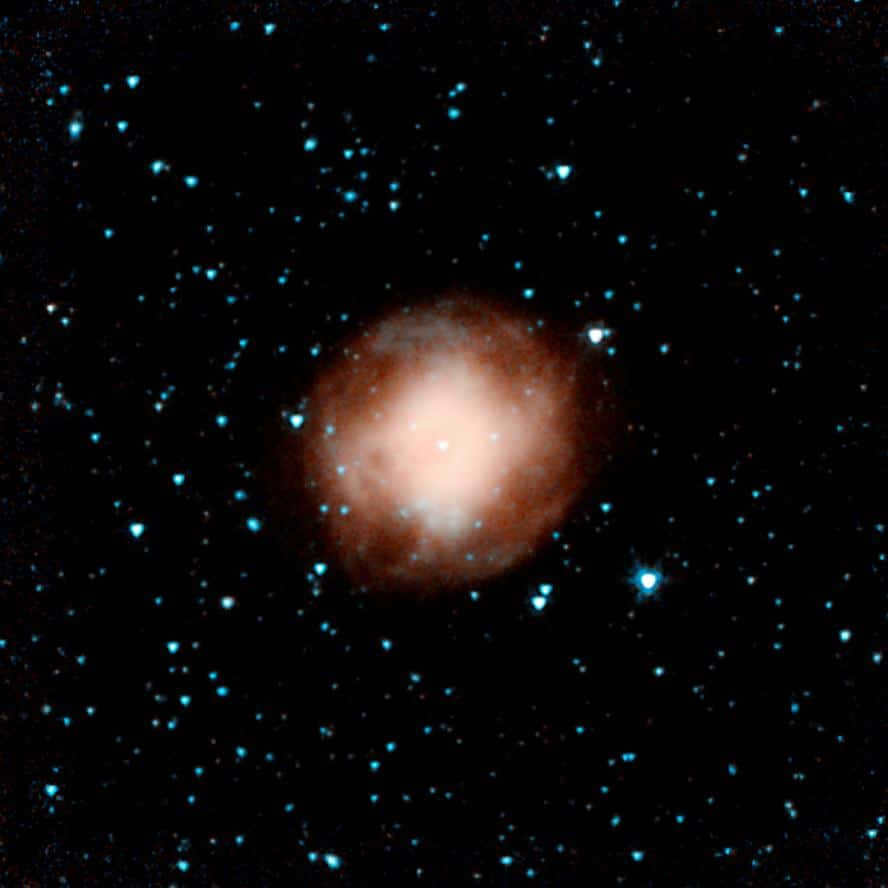
NGC 5033 is a spiral galaxy that appears to be tilted, with a prominent center and a less visible outer region. The core of the galaxy is bright, and it is classified as a Seyfert galaxy, suggesting the presence of a supermassive black hole.
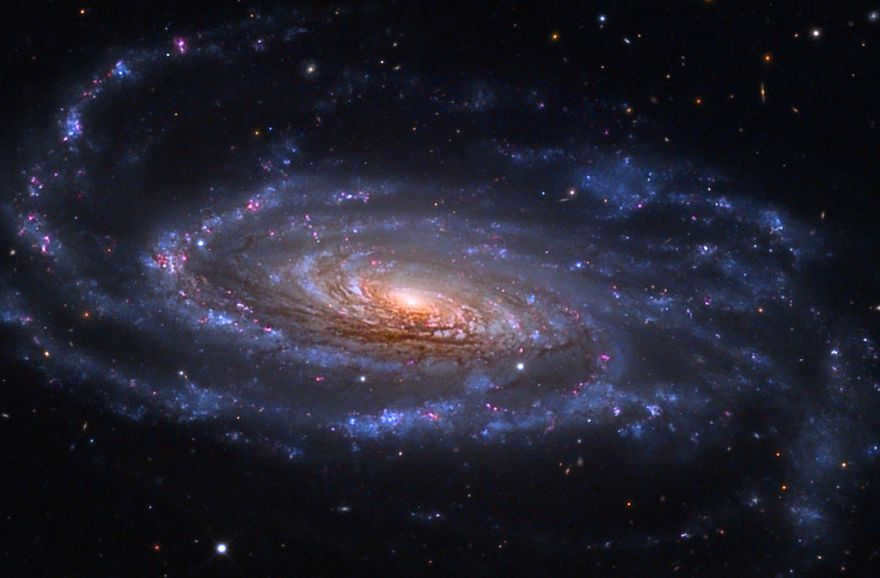
The position of the galactic core is not situated at the kinematic center of the galaxy, which is the point around which stars rotate. This suggests that NGC 5033 may have undergone a merger with another galaxy.
NGC 5033 is positioned relatively close to another spiral galaxy known as NGC 5005. These two galaxies form a physical pair and exert gravitational influence on each other. However, their distance does not result in tidal distortion.
NGC 5005, also referred to as Caldwell-29, is an inclined spiral galaxy with a visual magnitude of 10.6. It possesses a bright core and disk, making it observable even with amateur equipment. The core emits X-ray radiation and is located 65 million light years away.

NGC 4151 is a Seyfert galaxy of intermediate spiral type, exhibiting an apparent magnitude of 11.5. It is notable for being a recognized emitter of X-rays.
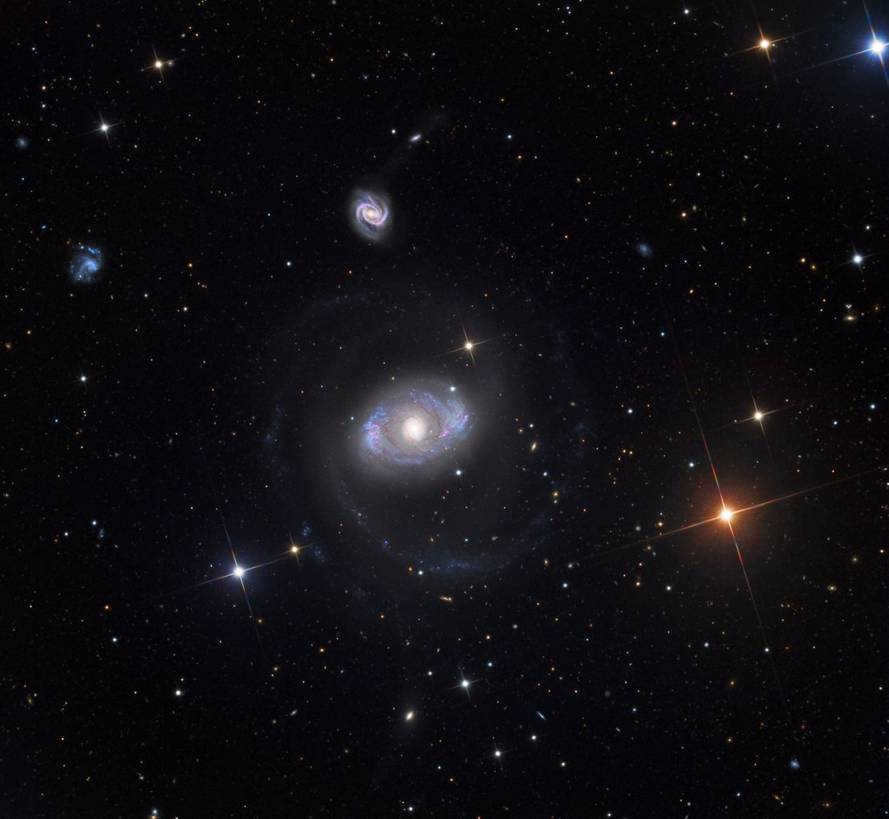

NGC 4618 is a small galaxy that can be seen in the night sky with a brightness of 11.2. It has a unique and twisted form, with only one spiral arm. Scientists have classified it as a Sm galaxy.
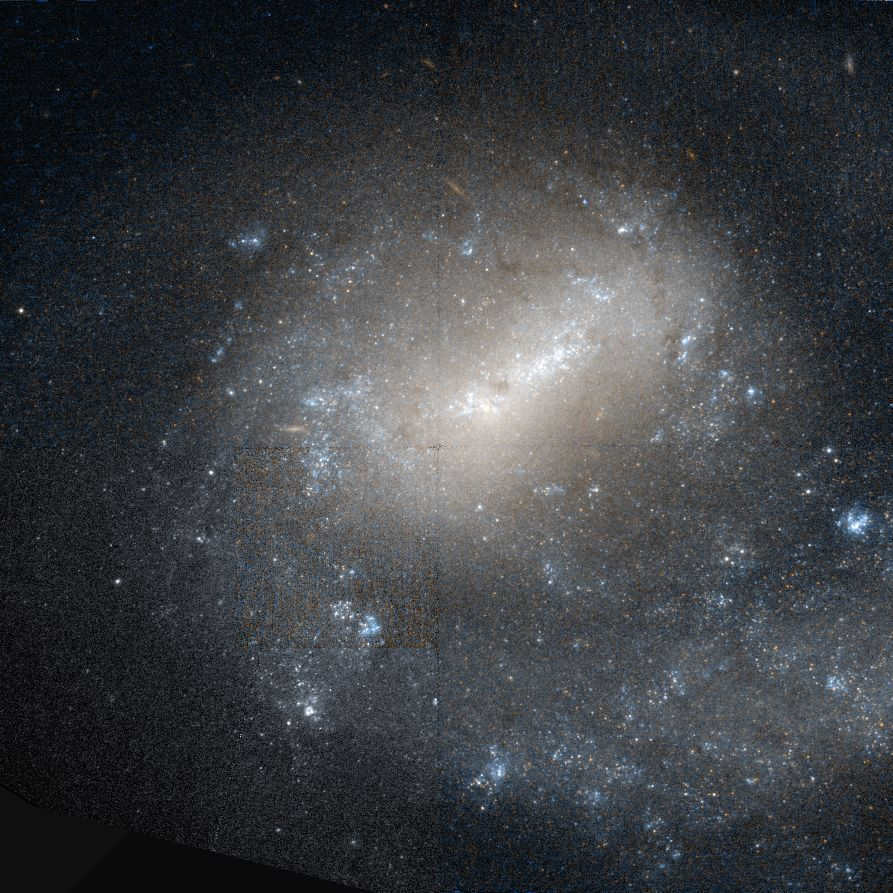
NGC 4625 is a small galaxy with a visual magnitude of 13.2. Its shape is asymmetrical and it has a solitary spiral arm. It is classified as a Sm galaxy due to its resemblance to a spiral galaxy. NGC 4625 is sometimes referred to as a Magellanic spiral galaxy because it bears resemblance to the Magellanic clouds, which are irregular dwarf galaxies orbiting the Milky Way in the southern hemisphere.
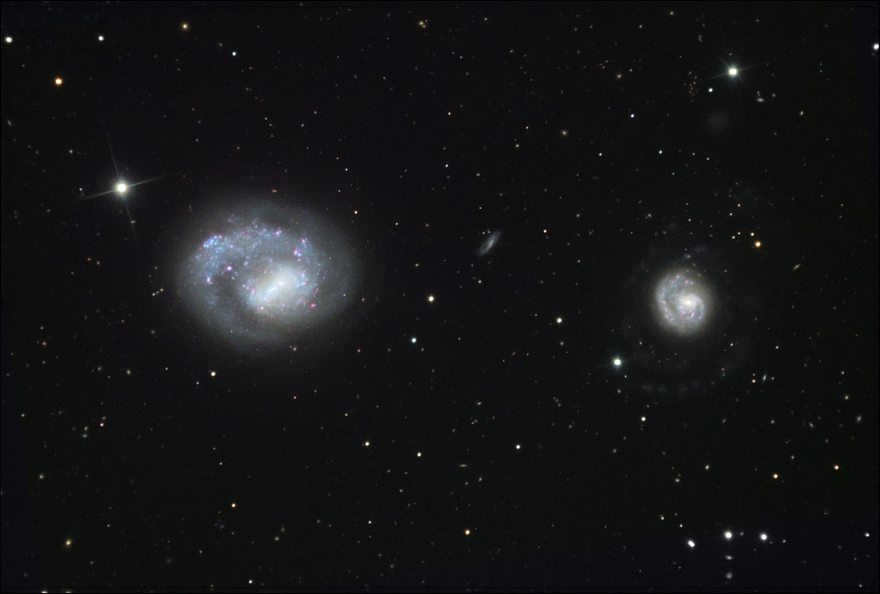
You are witnessing two adjacent galaxies, namely NGC 4625 (on the left) and NGC 4618 (on the right). Enveloping these galaxies are hydrogen gas cocoons, which are depicted in a purple hue. The arms of NGC 4625 are distinctly marked in blue and stretch out to a distance that is four times the magnitude of the galaxy’s nucleus. Due to its intense activity in star formation, there is a possibility for it to evolve into a more massive galaxy.
NGC 5371, a spiral galaxy classified as Sbc, is observed from a frontal perspective. It is positioned at a distance of 100 million light-years.
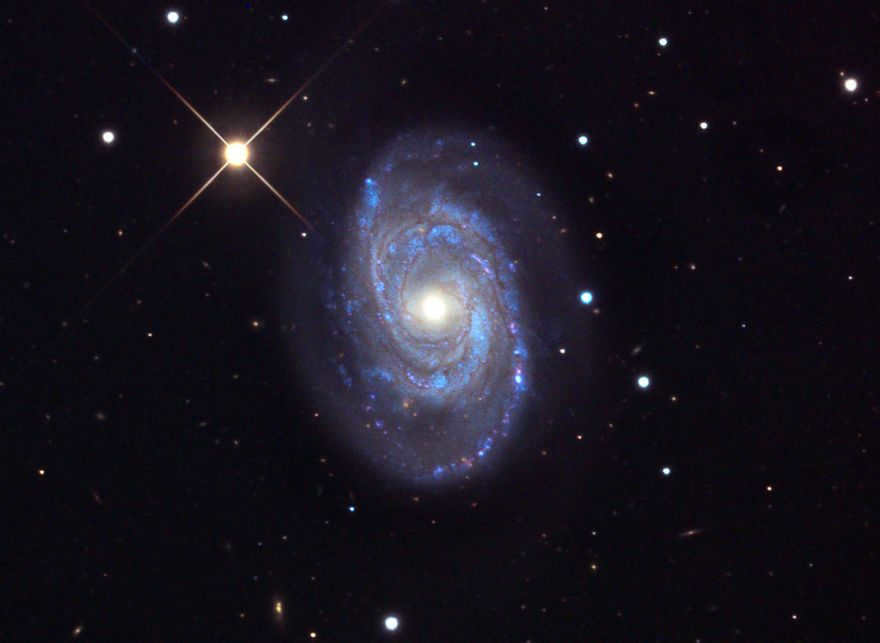
The NGC 4656 and NGC 4657 galaxies, also known as Hockey Stick Galaxies, have a visual magnitude of 11.0. These galaxies are currently interacting with each other and are part of the NGC 4631 group, which is located approximately 25 million light-years away in the constellations Canes Venatici and Coma Berenices. This group also includes the NGC 4627 dwarf elliptical galaxy.
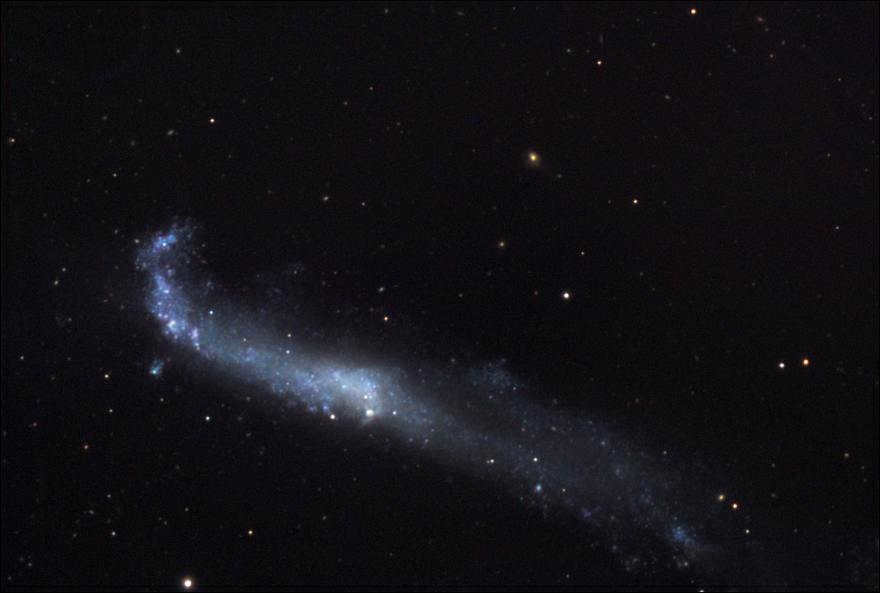
The Hockey Stick Galaxies are a group of spiral galaxies located 55 million light-years away. They have a total span of 80000 light-years and were first discovered on January 14, 1788 by William Herschel.
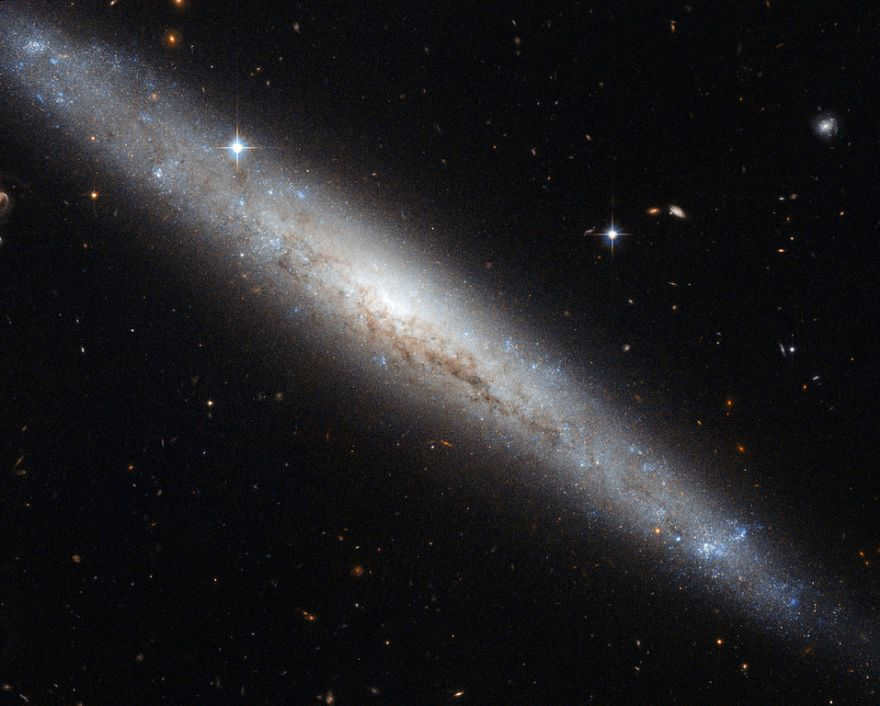

Regrettably, NGC 4183 is positioned in such a way that we are unable to fully observe its spiral arms. Nevertheless, the galactic disk stands out prominently. It is also conceivable that a bar may exist within the galaxy.
NGC 4214 is classified as a dwarf irregular galaxy with a junction. It has an apparent magnitude of 10.2, is located 10 million light years away, and spans an area of 8.4′ by 6.6′. This stellar galaxy is characterized by two sizable regions of active star formation, known as NGC 4214-I and NGC 4214-II, situated in its center.
In addition, NGC 4214 harbors two superstar clusters that are approximately 200 million years old. It is worth noting that NGC 4214 is both brighter and larger than the Small Magellanic Cloud.
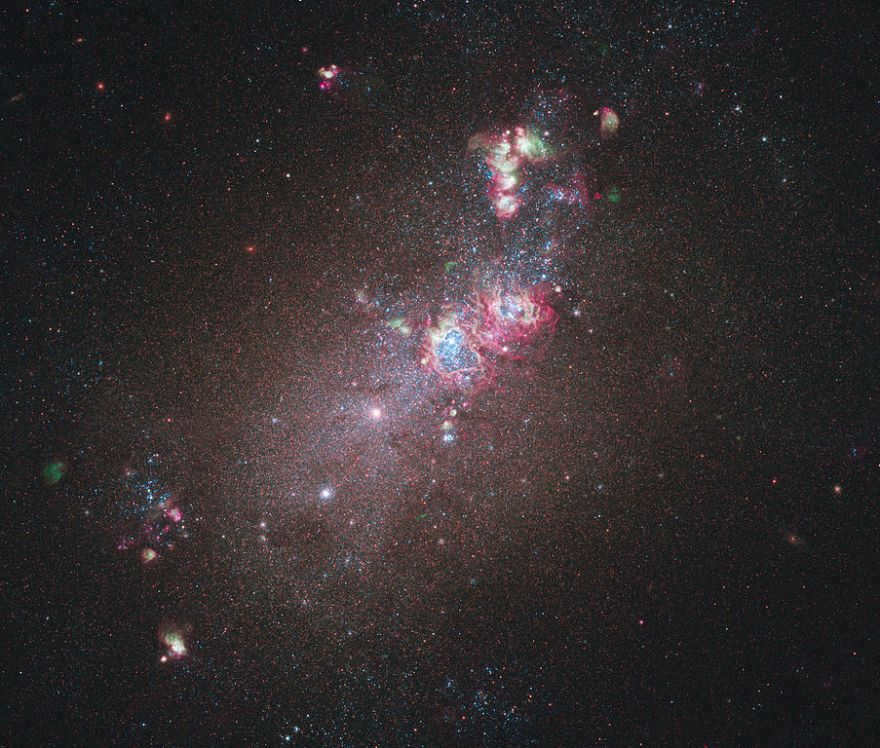
The Galaxy NGC 4214 is an astonishingly large luminous cloud of hydrogen gas, serving as the birthplace of new stars. Within a heart-shaped cavity, one can find massive young stars with temperatures ranging from 10,000 to 50,000 degrees Celsius.
NGC 4490, on the other hand, is a spiral junction galaxy that underwent an interaction with its smaller irregular companion NGC 4485, resulting in its transformation into a galaxy that actively forms stars. This interaction caused both galaxies to become distorted. NGC 4490 is located 25.1 million light-years away and has an apparent magnitude of 9.8. It was first discovered by William Herschel in 1788. Additionally, two supernovae have been observed in this galaxy: SN 1982F (1982) and SN 2008ax (2008).
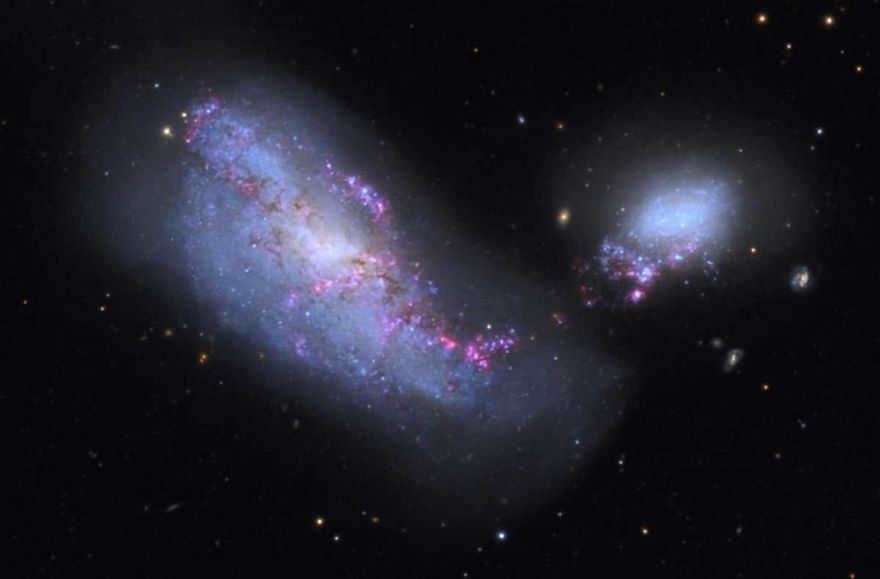
The NGC 4490 spiral galaxy is located 321 million light-years away and is also known as IC 883 or Arp 193. It has an irregular shape and a visual magnitude of 13.8, with an apparent size of 2.4′ x 0.7′. This galaxy was discovered on May 1, 1891 by Rudolf Ferdinand Spitaler, an Austrian astronomer. Scientists believe that the presence of double tidal tails indicates that NGC 4490 is the result of a merger between two disk galaxies.
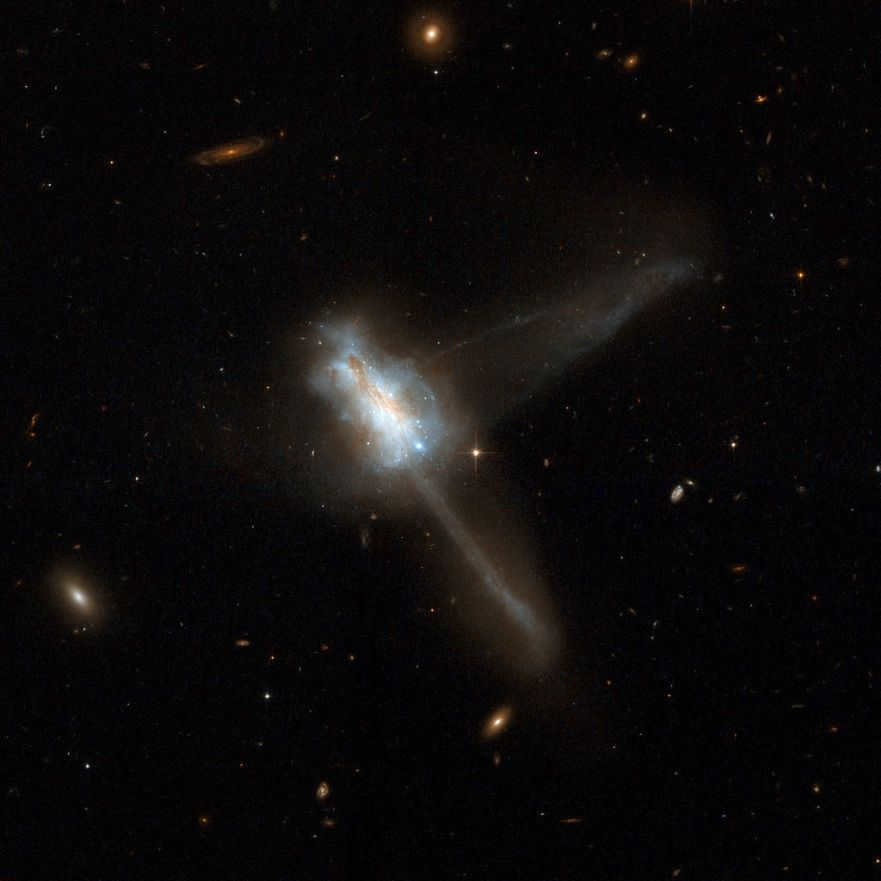
NGC 4449, located at a distance of 12 million light-years, is an irregular galaxy with a magnitude of 10. It has an apparent size of 6.2′ x 4.4′. It belongs to the M94 group and shares similarities in size and brightness with the Large Magellanic Cloud. However, NGC 4449 exhibits a star formation rate that is twice as fast as that of NGC 4449. It harbors multiple massive young clusters, with one of them situated in its center. The galaxy has acquired a distorted shape as a result of interactions with its neighboring galaxies.
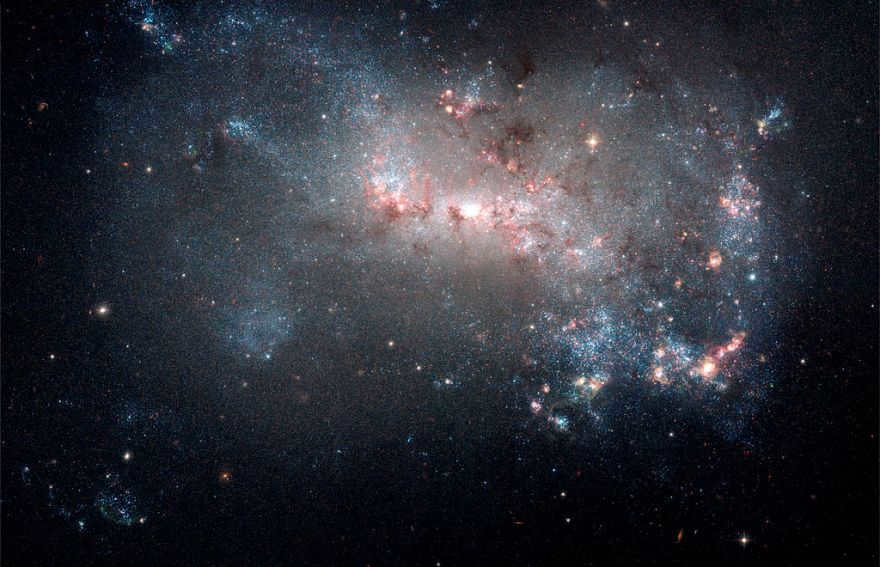

NGC 4449 has been undergoing star formation for billions of years, but now this rate has increased. Outbursts typically occur in the central regions, but NGC 4449 exhibits a wider range of star-forming activity, with the youngest stars observed both in the core and in the surrounding streams. It resembles primary star-forming galaxies.
Additional objects in the Hound Dogs constellation include the NGC 4627 dwarf elliptical galaxy, the NGC 5223 elliptical galaxy, the NGC 4138 lenticular galaxy, the NGC 4244 and NGC 4217 boundary spiral galaxies, and the NGC 5002, NGC 5112, and NGC 4534 spiral galaxies.
If you want to explore the Hound Dogs constellation in more detail, you can utilize not only our photographs but also our 3D models and online telescope. A star map, either static or interactive, is a useful tool for conducting your own observations.
While Hound Dogs may not be one of the largest constellations in terms of size, it is easily identifiable due to its proximity to the prominent “sky dwellers” Volopassus and the Big Dipper. This constellation boasts several notable stars and objects that are visible even with binoculars.
Hound Dogs – a constellation, which was first recorded in the 17th century, was previously unknown to humans. The stars that belong to the Hound Dogs were attributed to Volopas and formed his club.
The constellation of the Hound Dogs was initially described by a Polish astronomer named Johannes Hevelius. He made this “discovery” in 1690 in Uranography, which is an atlas of the sky.
The ancient Greeks associated the Hound Dogs with the dogs of Volopassus, Chara, and Asterion, who break free from their leashes while hunting the Big and Little Dippers.
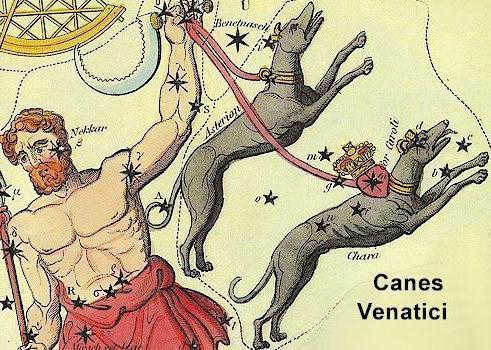
The Story behind the Hound Dogs Constellation
Zeus had numerous offspring from various relationships, both with goddesses and mortal women. One of these unions was with the nymph Artemis (Callisto), which resulted in the birth of a remarkable and strong son named Arcades. From a young age, Arcades developed a passion for hunting, and it was this very hobby that led to the creation of the Volopassus constellation in the night sky. According to the myth, Hera, Zeus’ wife, became consumed by jealousy and transformed Callisto, her rival, into a bear. When Callisto’s son encountered his mother in bear form, he failed to recognize her and nearly killed her until Zeus intervened. In order to ensure the safety and preservation of his beloved nymph and son, Zeus decided to immortalize them by transforming them into constellations and placing them side by side in the celestial realm. And so, the Big Dipper and the Hound Dogs, alongside the Wolopassus constellation, came into existence, forever guarding and observing the lives of mankind from above.
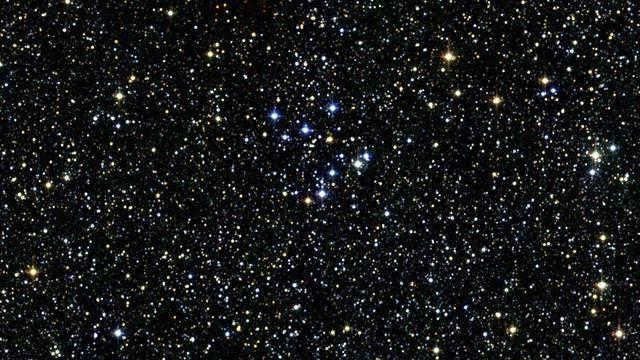
When is the optimal time to observe the Hound Dogs (constellation)?
The Hound Dogs (constellation) is easily visible to the naked eye, as it is bright and consists of fifty stars. It can be observed from any point in Russia, Ukraine, and Belarus. The best time to observe this constellation is during the spring months, from early March to the end of April. During this period, the Hound Dogs are closer to the Earth, making them more visible and enhancing their vibrant colors.
To locate the constellation, you only need to focus on the North side of the sky. This constellation covers an area of just 465 square degrees and does not contain very bright stars. However, it is still relatively easy to find among the larger constellations. The Hound Dogs is positioned just below the handle of the well-known Big Dipper. Situated below the Hound Dogs is Volopassus, while next to it is Veronica’s Hair.
To find Cor Caroli, which is the alpha star of the Dogs, imagine your finger as a pencil and draw a line southeast from the star Dubhe to Fad. This line will guide you to Cor Caroli. On the eastern side of Cor Caroli, you will find the constellation Capricorn and its famous star Arcturus.
The Hound Dogs constellation is positioned at a considerable distance above the horizon, with only thirty out of its fifty stars being fully observable. To catch a glimpse of the remaining stars, you will need to equip yourself with a telescope. Similarly, by utilizing a telescope, you can observe the constellation’s most captivating entities with enhanced clarity.
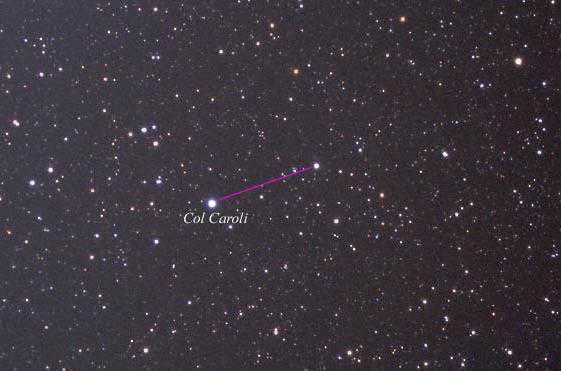
The Brightest Star in the Hound Dogs Constellation
Cor Caroli, also known as the Heart of Charles, serves as the alpha star in the Hound Dogs constellation. Originally, this celestial object was not part of the Hound Dogs constellation and existed as a separate star. In 1660, it was given the name Cor Caroli in honor of Charles Scarborough, who served at the court of Charles II. However, the star was named not after Scarborough, but in memory of his father, Charles I, who was executed in 1649. Charles’ wish was fulfilled, and to this day, Cor Caroli continues to shine brightly in the sky, captivating observers with its beauty.
It appears that Cor Caroli appears exceptionally bright because it is in such close proximity to Earth. However, this is not actually the case. In order to reach this radiant celestial body, one would need to travel a staggering distance of one hundred and ten light years!
According to the majority of scientists, this particular star is a captivating amalgamation of two distinct systems. The first system consists of a scorching hot star with a striking blue-white hue, while the second system is comprised of a more subdued yellowish-colored dwarf. These two systems have come together to form an awe-inspiring luminary, whose luminosity is subject to change. The fluctuations in brightness of Cor Caroli can be attributed to its rotation and magnetic field, which surpasses the magnetism of the Sun by a factor of one hundred. Furthermore, the magnetic field has a profound impact on the appearance of prominent spots and inconsistencies in the star’s photosphere.
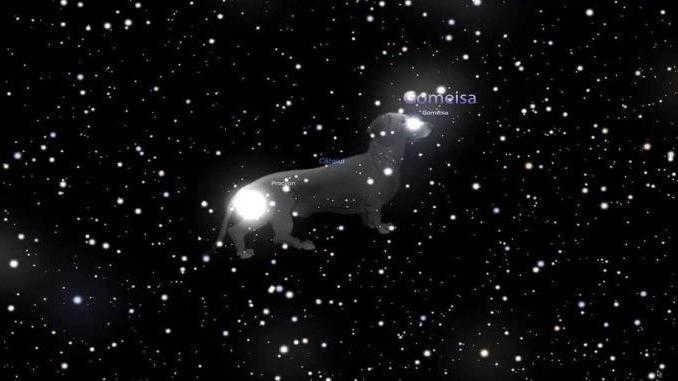
Chara
The canine in the Southern region owes its existence to Beta, a celestial body known as Chara. It is also referred to as Chara, Chara, and Asterion, which are the monikers of the legendary canines of Arcadus.
Chara does not emit light as brilliantly as Cor Caroli, but it is positioned closer to us, approximately twenty-seven light years away. The diameter and mass of this celestial body are equivalent to 111 and 108 percent of the sun’s, and its luminosity surpasses that of the sun by almost one and a half times. Chara is also a truly long-lived celestial body, with an age of four billion years.
Beta of the Hound Dogs is a yellow dwarf and falls into the G-class category. Certain researchers posit that it bears the closest resemblance to the Sun, given its identical age, temperature, and quantity of dust conducive to planet formation. This celestial body stands out as the most prominent object of interest in the quest for the existence of extraterrestrial life. Additionally, astronomers theorize the presence of a considerably sizable companion within the beta system, with an orbital cycle lasting approximately two and a half thousand days. However, no definitive evidence has been unearthed to substantiate this speculation.
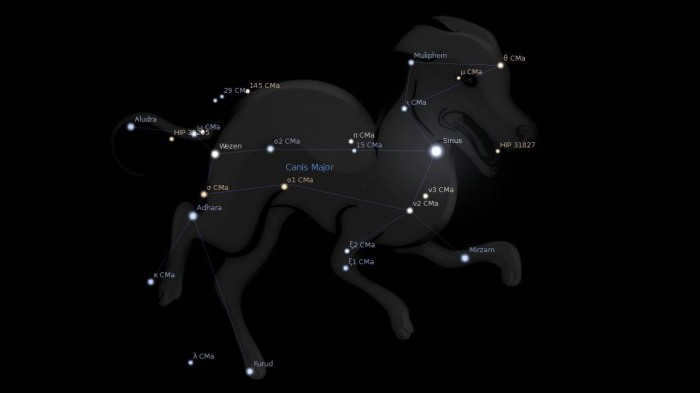
The Hound Dogs in the Sky
The Hound Dogs constellation, showcased in the image above, is well-known for its impressive collection of stars. Among them, one particular star stands out for its unique characteristics. This star, known as Y Dogs Arcade, is classified as a J-type star due to its elevated carbon-13 levels. However, what truly distinguishes this celestial body is its captivating red luminosity. As the brightest carbon giant of its kind, Y Dogs Arcade emits a mesmerizing glow that captivates astronomers and stargazers alike. Surrounding this magnificent star is a nebula, formed from the expelled matter of other stars. Spanning a distance of two and a half light-years, this nebulous haze adds to the allure of the Hound Dogs constellation.
The discovery of Y Dogs Arcade and the Hound Dogs constellation is relatively recent, dating back to the early 19th century. It was first observed by Angelo Secchi, an esteemed Italian astronomer.
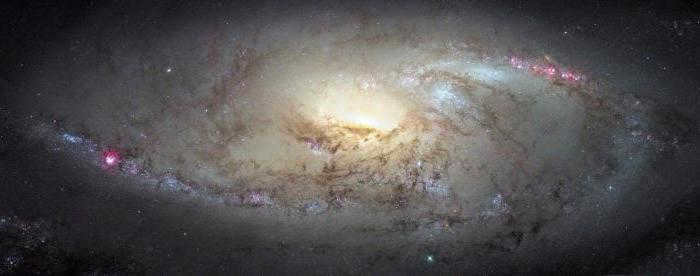
Notable Features
In addition to its stunning stars, the Hound Dogs constellation is home to several other fascinating objects. One of the most remarkable is the Whirlpool galaxy, also known as M51. Amateur astronomers who possess basic telescopes are likely to be familiar with this galaxy, as it can be observed without professional equipment.
Other galaxies, such as the Sunflower (M63) and M101, which is located near the beta star, can also be seen within this constellation.
The Hound Dogs constellation also boasts another noteworthy feature. It contains a globular cluster called M3, which consists of over five hundred thousand stars. This cluster can be easily observed even with binoculars, provided that one views it away from the bright lights of the city.
The Hound Dogs constellation is known as Canes Venatici in Latin, deriving its name from the two dogs that used to accompany the Wolfhound – their names being Asterion and Chara. This constellation was first recognized in 1690 by the Polish astronomer Jan Hevelius and prior to that, it was considered a part of Volopas.
The constellation Canes Venatici in the heavens
The celestial region occupied by the constellation covers an impressive expanse of 465 square degrees (ranking 38th among all constellations). Positioned in the northern section of the sky, it can be found beneath the prominent asterism of the Big Dipper when it reaches its lowest point. This constellation remains visible throughout Russia for the majority of the year, with the exception of the autumn and early winter months when it descends too close to the horizon, making it less than ideal for observation.
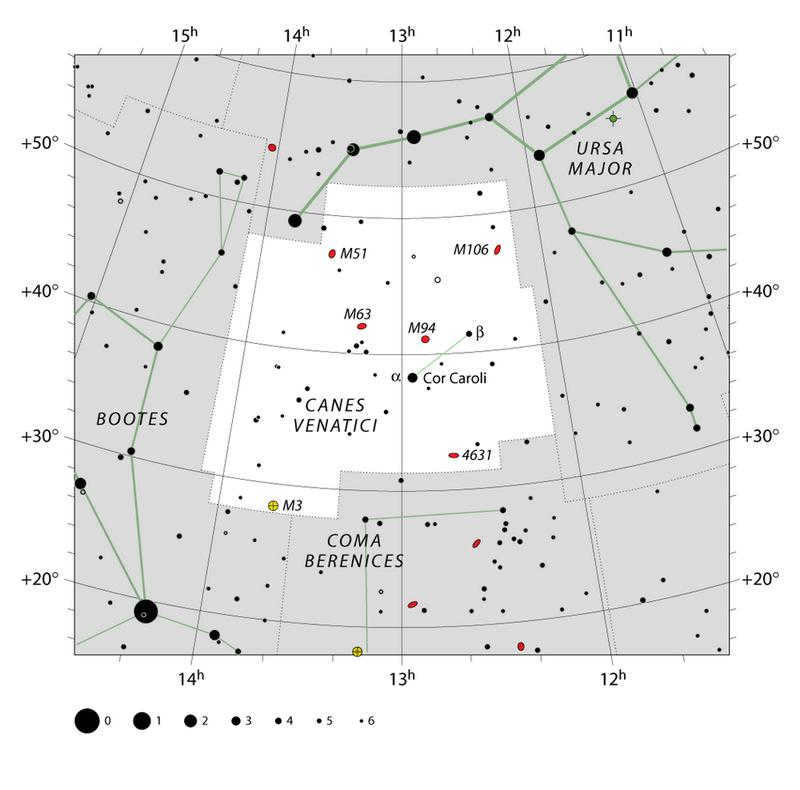
Map of the Hound Dogs constellation.
Despite its relatively small size and unattractive appearance at first glance, the Hound Dogs constellation contains a wealth of interesting celestial objects. It is particularly valuable for astronomy enthusiasts, especially those equipped with a high-quality telescope.
The Origins of the Hound Dogs Constellation
Originally, the stars comprising this constellation were part of Volopassus, as designated by Ptolemy. He referred to them as a pack of Hound Dogs, representing the dogs that Volopassus pits against the Big Dipper.
In the 17th century, these stars were officially separated and formed their own distinct constellation, first appearing in the atlas “Uranographia” published in 1690.
The primary star of the Hound Dogs possesses its own unique history. In 1660, Charles Scarborough, the court physicist and mathematician to King Charles II of England, proposed that the entire constellation be designated as Charles’s Heart, as a tribute to King Charles I who was executed by Cromwell in 1649. Reportedly, during that time, it had a particularly vibrant purple hue, reminiscent of blood.
Due to the confusion that persisted until the late 19th century, the constellation was referred to as the Heart of Charles II and eventually was completely disregarded. However, the name endured for the brightest star within the constellation, and it continues to be known as the Heart of Charles to this day.
Bright stars in the constellation Canes Venatici
There are a total of 57 stars that can be seen with the naked eye in the constellation Canes Venatici, but the most bright and interesting one is alpha. It is also known as the Heart of Charles or Cor Caroli.
Alpha of Canes Venatici, the Heart of Carlo.
This star is one of the most stunning binary stars. The distance between the two components is 19.6″, making them easily visible through binoculars.
The primary element in this system is known as α2, a hot blue-white star. Its spectrum contains a wide range of silicon, mercury, and europium lines. It is also the leader of an entire class of variable stars that differ greatly from the others. This particular star is merely 3.3 times more massive than the Sun, but its magnetic field is 100 times more powerful. It rotates at a high speed, and the fluctuations in its magnetic field create significant disparities in its photosphere. This results in the formation of large dark spots, causing the star’s brightness to vary from +2.84m to +2.94m over a period of 5.47 days.
The second element is a nondescript yellow star with a mass 1.5 times that of the Sun. Its luminosity is 5.6m. When combined, these stars create a stunning pair that is definitely worth observing.
This celestial object is also known as La Superba, which is a moniker that translates to “The Superb.” Furthermore, it is not only one of the most visually stunning stars in our planet’s sky, but it is also classified as a rare variety of carbon star.
Located a staggering 710 light years away from Earth, the Hound Dog Gamma is classified as a semi-regular variable star. Typically, its luminosity hovers around 6.3m, but during its peak brightness, it can reach an impressive 4.8m. The star exhibits a periodicity of 160 days, with a suspected additional period of 2000 days that necessitates further investigation.
What sets this star apart is its status as a supergiant, measuring a whopping 215 times the size of our Sun. If hypothetically placed at the heart of our solar system, its surface would be situated at a distance of 2 astronomical units from the central point – a distance that surpasses the orbit of Mars. In this scenario, planet Earth would be deeply engulfed within the star’s expansive boundaries.
What sets this star apart is its high carbon content, which is the result of nuclear fusion of helium. The carbon compounds absorb the blue portion of the electromagnetic spectrum, giving the star a distinct red appearance. Hence, it is named La Superba.
Y of the Hound Dogs is significantly colder than the Sun, with a surface temperature of approximately 2200 K. However, due to its immense size, it emits 4400 times more energy. Additionally, it is undergoing rapid mass loss in the form of stellar wind. While this amounts to only a small fraction of a solar mass per year on a stellar scale, it is still a million times more than what the Sun loses. It is worth noting that this star has a mass of no more than 3 solar masses.
As a result of this process, a gaseous envelope of ejected matter has formed, located 2.5 light-years away from the star.
Y of the Hound Dogs is in its final stage and is on the brink of explosion. It is anticipated to shed its gas shell and transform into a white dwarf.
Moreover, the Hound Dogs have an additional enigma. It is not simply a carbon star – it harbors an immense quantity of a carbon isotope with 7 neutrons in its nucleus, as opposed to 6. The progression of such stars has not been thoroughly examined or even hypothesized. Numerous stars of this kind have been identified, but Y of the Hound Dogs stands out as the most luminous among them, thus making it the primary focus of study in this particular course.
The galaxies within the constellation Canis Major.
Despite its modest dimensions and unpretentious appearance, the constellation Canis Major is teeming with a variety of celestial entities, including star clusters and galaxies. The latter are incredibly abundant in this region of the universe. Let us explore some of the most dazzling and captivating ones.
M3 is a brilliant globular cluster.
This globular cluster is the third entry in the Messier catalog and was first observed by William Herschel in 1784. It is also known as NGC 5272. With a magnitude of 6.4m, it is easily visible through binoculars, although individual stars can only be resolved using a telescope.
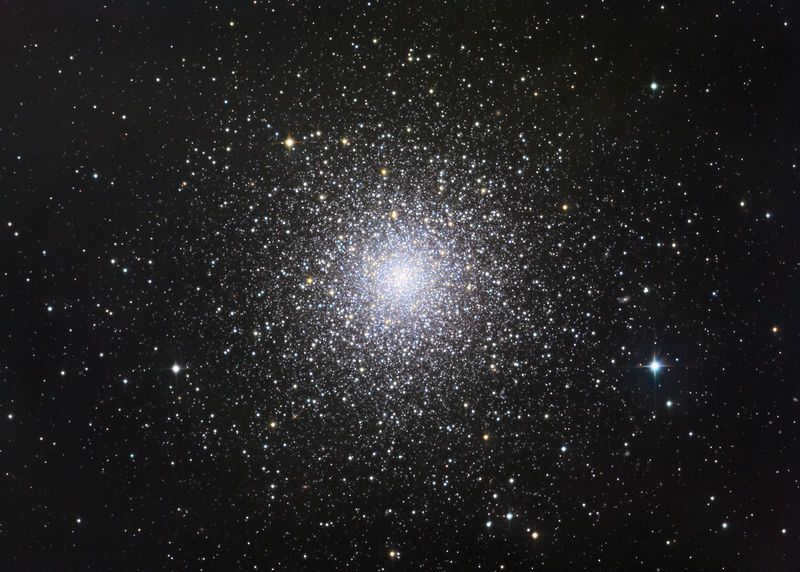
The distance to M3 is approximately 33,900 light years away, and it is home to around 500,000 stars. Its age is believed to be around 8 billion years.
M3, the globular cluster, stands out as one of the brightest and largest of its kind.
M51 – Whirlpool Galaxy (NGC 5194)
M51, also known as the Whirlpool Galaxy, is renowned for its beauty and can be easily spotted even with binoculars. It features a magnificent spiral structure that appears flat when viewed from our perspective, resembling a whirlpool.
The distance between our Milky Way and the M51 galaxy is estimated to be between 23 and 37 million light years. Its diameter can range from 60,000 to 90,000 light years, making it considerably smaller than our Milky Way. Nevertheless, it is still an immense galaxy with a mass of approximately 160 billion times that of our Sun. At its core lies a black hole.
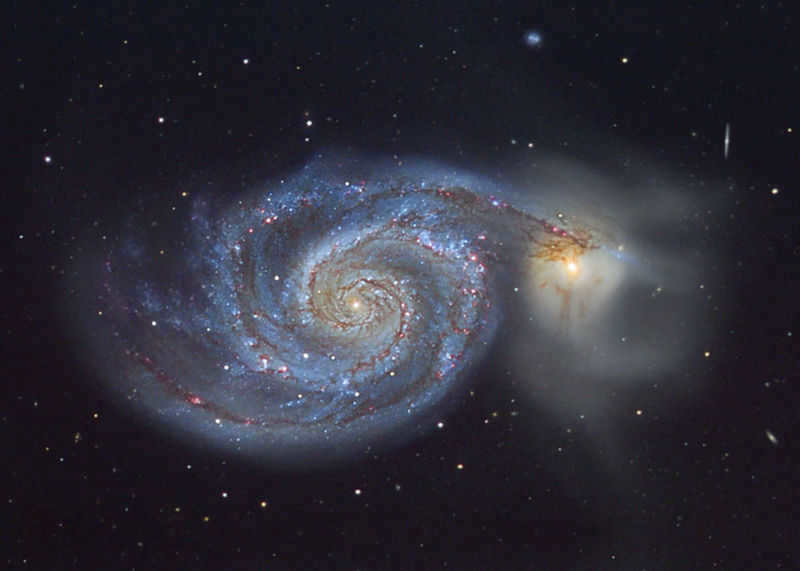

The Whirlpool galaxy, also known as M51, is accompanied by another galaxy called NGC 5195. NGC 5195 is about 2-3 times smaller in mass compared to M51 and is currently experiencing a high rate of star formation.
Interestingly, M51 was the first galaxy to be recognized as having a spiral structure. Charles Messier initially discovered it in 1773 and listed it as a nebula in his catalog. It wasn’t until Lord Ross observed M51 through the Leviathan, the largest telescope of Newton’s system, in 1845 that the spiral structure was observed and sketched.
In 2020, astronomers made a groundbreaking discovery in the M 51 galaxy by finding a potential exoplanet near a binary star system emitting X-rays. If further investigation confirms this finding, it will mark the first time a planet has been detected in a different galaxy.
M51, also known as the Whirlpool Galaxy, stands out due to its relatively high luminosity of 8.4m and its angular dimensions measuring 11×7′. It is easily observable with binoculars or a small telescope, and with an aperture of 100mm or larger, one can even observe its spiral structure. By increasing the aperture to 200mm or more, it becomes possible to see not only the spirals but also the bright core of the galaxy and its companion, which has a brightness of 9.6m.
Within the constellation, there exists a cluster of M51 galaxies, with M51 Whirlpool Galaxy being the most prominent member.
The Sunflower galaxy (NGC 5055), also known as M63, is a spiral galaxy that belongs to the M 51 group.
With a luminosity of 8.5m and a distance of 37 million light years, it is the second brightest galaxy in its group.
What makes M63 unique is its angle of observation, which gives it a distinct appearance as a spiral galaxy.
In 1971, astronomers observed a supernova event within the M63 galaxy, adding to its astronomical significance.
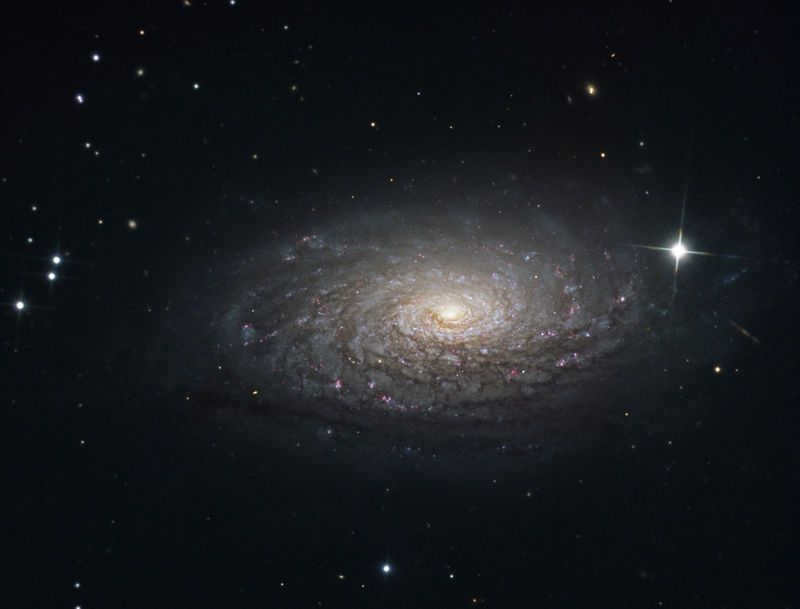
M94 is a spiral galaxy (NGC 4736).
This celestial body has attracted considerable attention from scientists due to its intriguing characteristics and enigmatic nature. One of the most captivating features of M94 is the existence of two distinct ring structures – an inner ring and an outer ring. The origin of these rings remains a mystery, as the mechanisms responsible for their formation have yet to be fully understood. Not only do the inner and outer rings differ in appearance, but they also exhibit variations in composition. The inner ring is known to be a hub of active star formation, with new stars being born within its boundaries. In contrast, the outer ring is home to a significantly faster rate of star formation, despite its comparatively smaller size. The underlying processes driving these disparities continue to elude scientists, leaving them eager to unravel the secrets of M94.
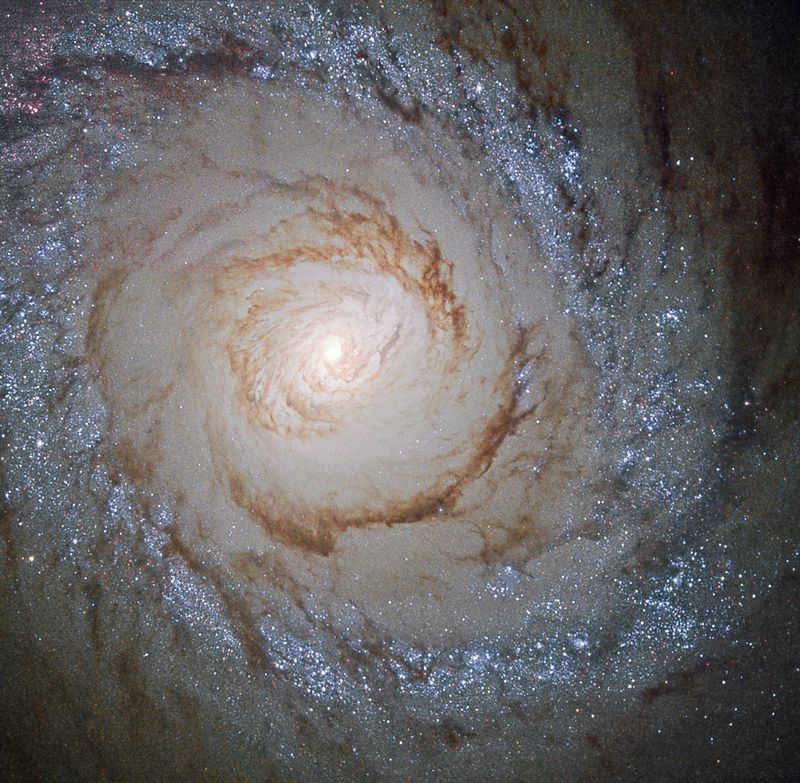
Moreover, M94 lacks the typical bulge found in similar galaxies – a spherical thickening in the middle of the galaxy that is easily observed when viewing the galaxy from its edge. Instead, it possesses a pseudo-bulge that takes the form of a ring encircling the central region, resembling a genuine bulge when viewed from a certain angle.
With a luminosity of 8.1m and dimensions measuring 14.4×12.1′, M94 can be readily observed in any telescope. However, a minimum aperture of 200 mm is required to examine its finer details. Interestingly, M94 is one of the closest galaxies to us, located approximately 16 million light years away. This proximity allows the Hubble Space Telescope to capture images of individual stars within this galaxy, enabling scientists to compare them with their counterparts in our own Milky Way.
M106, also known as NGC 4258, is a peculiar spiral galaxy
This particular galaxy possesses a multitude of enigmas. Similar to its predecessors, it was initially detected in 1781 by the esteemed French astronomer Pierre Meschen. At first glance, it exhibits the appearance of a typical spiral galaxy observed from an inclined perspective.
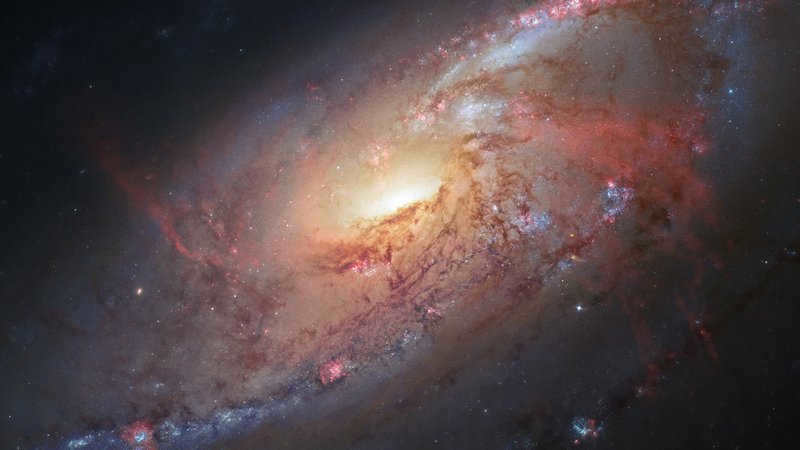
However, when observed in X-rays, M106 reveals additional spiral arms that cannot be seen through traditional telescopes. These arms consist solely of gas that has been expelled from the galaxy’s central region, devoid of any stars.
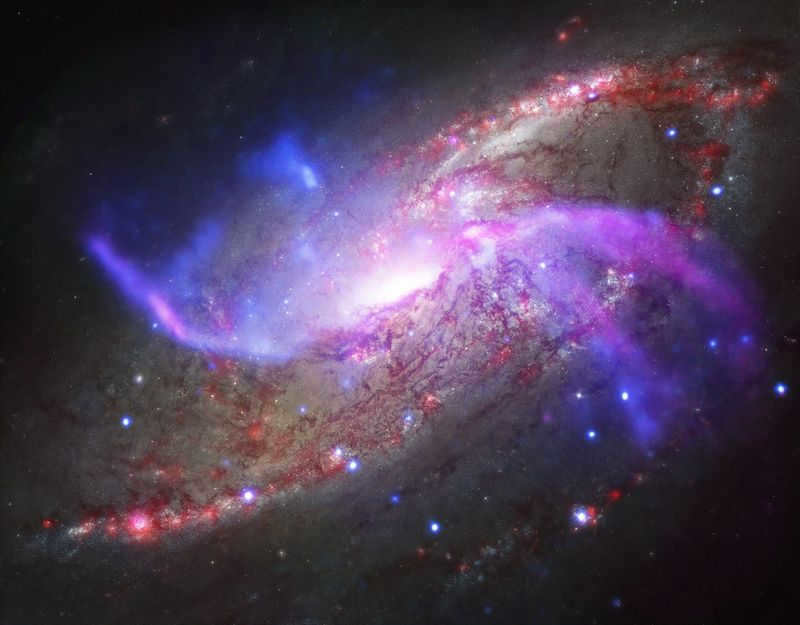
The X-ray spectrum reveals the distinctive presence of the gaseous appendages surrounding the galaxy M106.
An extraordinary supermassive black hole resides at the heart of this galactic phenomenon, boasting an astonishing size of up to 40 thousand astronomical units and an astronomical mass of 36 million solar masses. It is highly probable that this celestial entity voraciously consumes any celestial objects within its formidable gravitational pull.
NGC 5033: A Spiral Galaxy with Unique Features
NGC 5033 stands out among the spiral galaxies with its distinctive characteristics. With an apparent stellar magnitude of 10.0m, this galactic wonder is easily observable even through amateur telescopes. What sets NGC 5033 apart is its intriguing angle of view. Unlike other spiral galaxies, NGC 5033 showcases a remarkably bright nucleus, while its spiral arms are delicately faint.
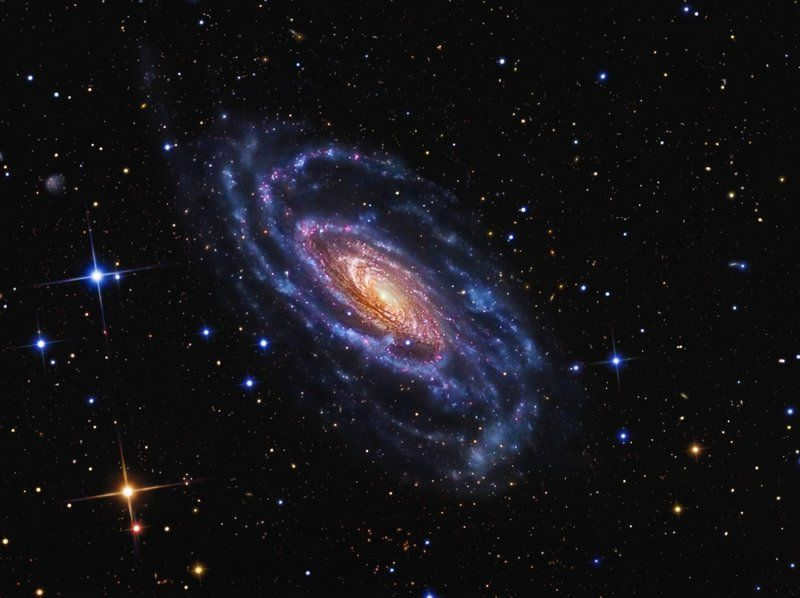
There is also a supermassive black hole situated in the core of this galaxy. However, an intriguing aspect of this galaxy is that the nucleus is not positioned at the center of the galaxy’s rotation, but rather displaced. The reason behind this displacement remains unclear, but one theory suggests that there was a merger of two galaxies in the distant past. The nucleus’s displacement in the center leads to disruptions in the gas motion, as it gets absorbed by the nucleus. Consequently, the gas gets compressed and heated due to the strong gravitational forces, resulting in a highly luminous region.
To locate these galaxies for observation, you have the option to refer to maps or utilize software like Stellarium or its equivalents. For instance, these maps display a selection of the most luminous galaxies, and you can discover additional ones within the software.
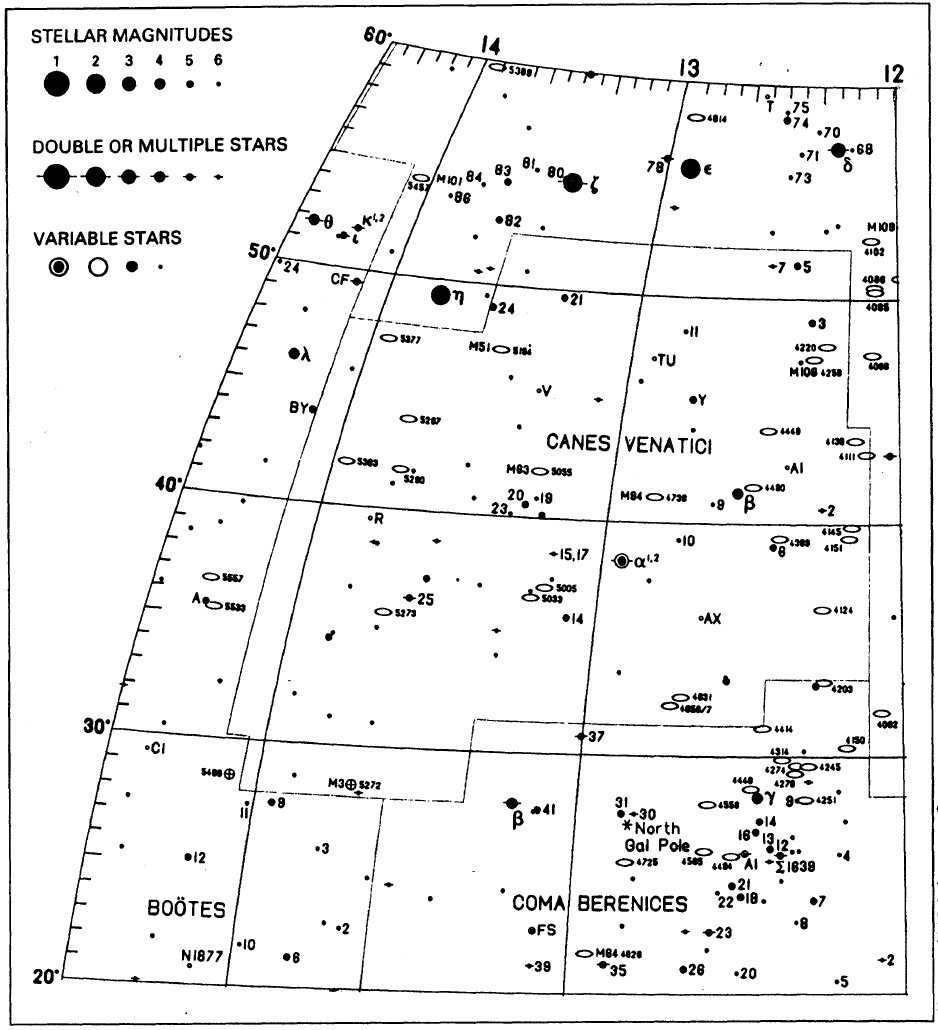

The position of a few galaxies within the constellation Hound Dogs.
The Hound Dogs constellation, despite its unremarkable appearance to the naked eye, is actually home to a vast array of celestial wonders. It is worth taking notice of, even with just a pair of binoculars. And with a telescope in hand, you can easily spend countless nights exploring its depths.
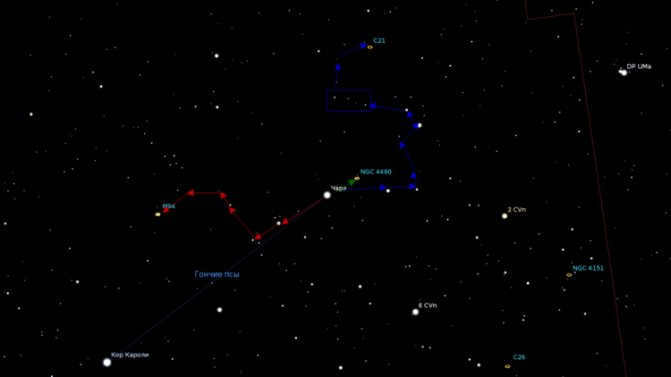
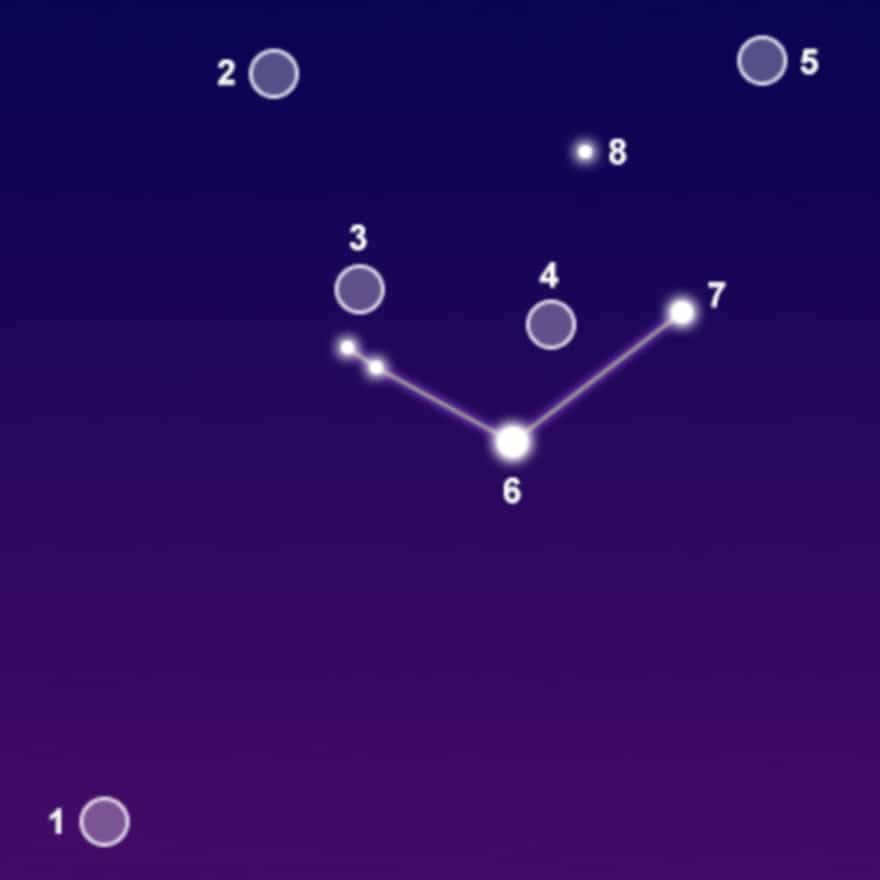
Nowadays, the image of these celestial bodies is connected with the canines of Arcadus, who forever wandered the sky as Volopassus. Volopassus was the offspring of Zeus and Callisto, a nymph devoted to the goddess Artemis, who was transformed into a bear by the envious Hera. As a skilled hunter, Arcadus failed to recognize his mother in her animal form and commanded his hounds to attack her. In order to commemorate this event (or perhaps to protect his beloved and son from Hera’s wrath), Zeus placed these heroes among the stars. Thus, the Hound Dog constellation, along with the Big Dipper and the Magpie, illuminates the night sky.
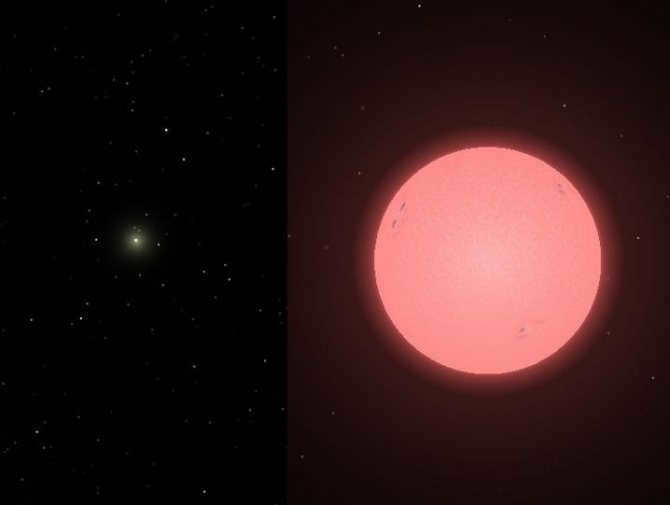
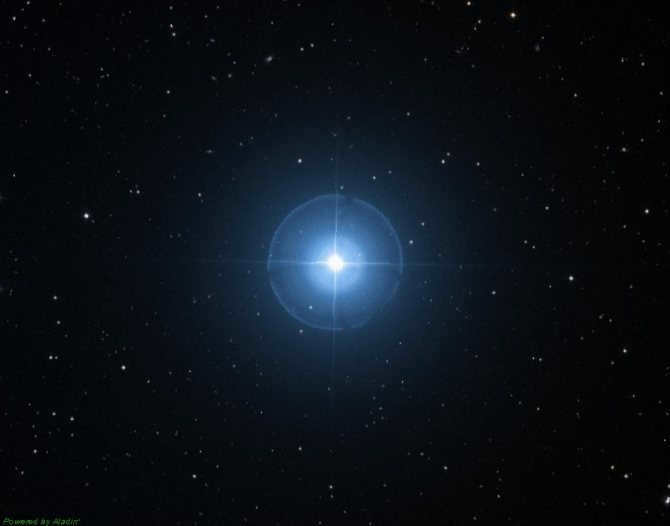
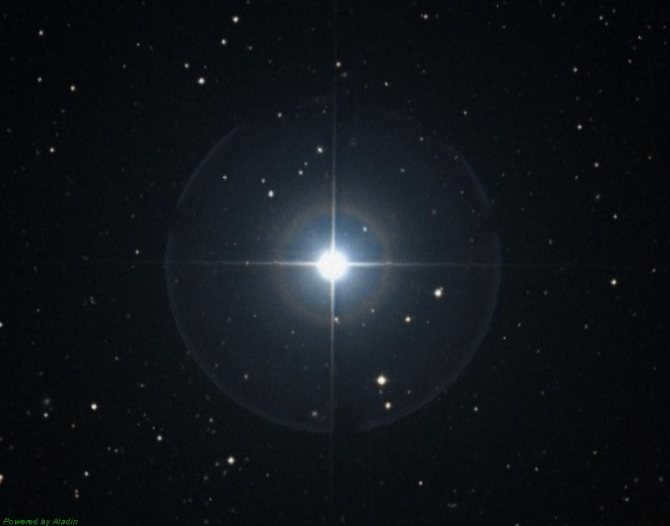
Ways to spot the Hound Dogs constellation in the nighttime sky
The Hound Dogs constellation is an extraordinary formation situated alongside neighboring constellations like the Big Dipper, Veronica’s Hair, and the Volopassus. In Russia, it can be observed specifically during the early spring months of March and April.
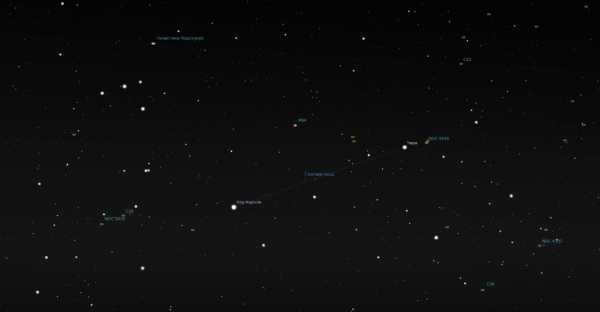
The appearance of the Hound Dogs constellation can be observed through the planetarium program.
The constellation of the Canes Venatici is not known for its bright stars and has a relatively small size, but this does not make it any less visible in the vast expanse of the night sky, filled with a wide array of constellations. All the stars in Canes Venatici can fit within the “handle” of the Big Dipper. If you extend your finger as a “celestial marker” and draw a line from the star Dubhe to the star Fad in the southeast direction, you will be led to the alpha star of Canes Venatici, Cor Caroli. To the east of it lies the constellation Capricornus and its famous star, Arcturus. Canes Venatici is located high enough above the horizon and can be easily observed from anywhere in our country.
Have you seen: Multiverse
The story of the past
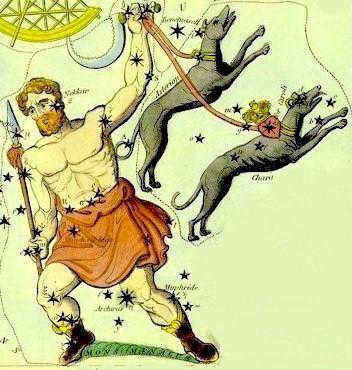
Characteristics
The star is a yellow dwarf on the main sequence. It has a mass and diameter that are approximately 108% and 111% of the sun’s mass and diameter, respectively. Its luminosity is 1, 2 times greater than that of the sun, and the presence of heavy elements in its composition is 59 to 120% of the solar equivalent. β of the Hound Dogs
This star is part of a large family of stars in the galactic disk and is estimated to be 4.05 billion years old. Astronomers believe that there may be a massive companion in the system. However, so far, no solid evidence of its existence has been discovered.
β of the Hound Dogs
Nevertheless, researchers continue to search for proof of its presence.
Place
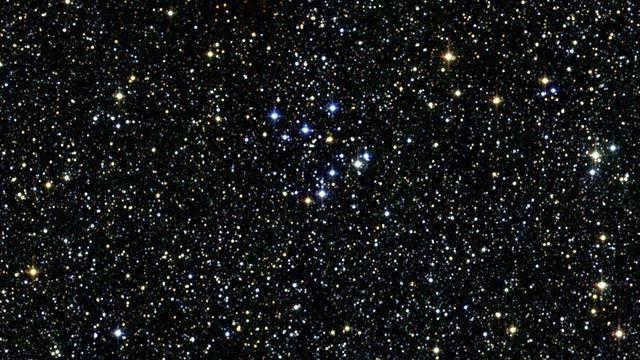
The constellation of Canes Venatici – is a compact group of stars. In optimal conditions, it is possible to discern up to thirty celestial bodies with the naked eye. Locating this celestial pattern can be done by using the Big Dipper as a reference point, which is usually easy to locate. The constellation of Canes Venatici is positioned directly beneath the Big Dipper. By drawing a line through the stars alpha and gamma of the Big Dipper in a southeasterly direction, one can identify the brightest star in the constellation, known as the Heart of Charles. To the east of Canes Venatici, another distinct constellation called Volopassus can be observed in the night sky.
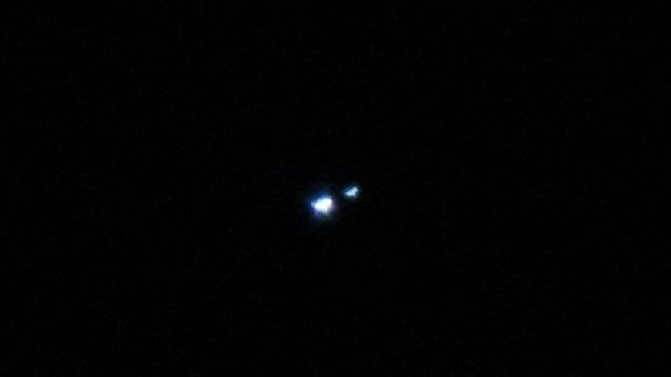
The Core of Charles
AM of the Hound Dogs, on the other hand, is an irregular variable star and falls into the cataclysmic type. There is a noticeable sharp increase in brightness. The visual average is 14.18. Interestingly, this constellation has a prototype for a whole class of stars – the RS type variable Hound Dogs. Unlike others, these close binary stars are characterized by fluctuations in luminosity that occur due to active chromospheres. The periodicity of these oscillations is the same as the orbital period of the object.
– I adore hound dogs, they are silly, but I adore them. They are incredibly beautiful. Beautiful women are often unintelligent…..
Maxim Gorky, In the People, 1914.
Carl’s Passion
Alpha of the Hound Dog – shines the brightest in this heavenly arrangement. Charles Scarborough bestowed upon it such a lyrical designation. In 1660, he proposed that the constellation of Charles’ Passion, comprising of only a single luminary, be included in celestial maps. His desire was fulfilled. The “Constellation” existed in this form until the late 19th century. Eventually, the name was passed on to the alpha of the Hound Dogs.
Also, check out: Northern Crown Constellation ContentsMain stars of the constellation Northern CrownInteresting objects to observeFinding the constellation in the skyHistory of the constellation Northern CrownNorthern Crown – neb
The star was dedicated to Charles I, who was executed in 1649 and was the father of Charles II, of whom Charles Scarborough was a member of his court. Alpha of the Hound Dogs is considered one of the most stunning binary systems by numerous scientists. Its primary component is a hot blue-white main-sequence star. It serves as the model for the variable luminaries of the same name. The variations in the star’s brightness are caused by its rotation and an incredibly powerful magnetic field. The latter surpasses the Sun’s magnetic field by a hundredfold. The star’s brightness fluctuates from +2.84 m to +2.94 m with a period of 5.47 days. The magnetic field of the star also creates large spots and irregularities in the photosphere of this celestial object. The second component of the system is a yellow dwarf star that belongs to the main sequence.
Notable celestial objects[2]
- The most brilliant star in the constellation, α Hound Dogs, known as the “Heart of Charles” in remembrance of the extinct constellation “Heart of Charles”, which consisted of a single star, is an exquisite binary star and serves as the archetype for an entire category of variable stars.
- The M 3 star cluster (NGC5272) is a globular cluster, housing approximately 500,000 stars.
- The Whirlpool Galaxy (M 51 or NGC 5194) is a spiral galaxy of the Sc classification, situated 38 million light years away from our vantage point. A supernova event was documented within the galaxy in 1994. It possesses a companion galaxy known as NGC 5195.
- Galaxy M 106 (NGC 4258) is a peculiar spiral galaxy of the Sbp type. It is located at a distance of 21 million light years from us.
- The pair of galaxies NGC 4490 (with an apparent magnitude of 10) and NGC 4485 are situated at a distance of 12.5 million light years.
- Galaxy M 94 (NGC 4736) is categorized as a spiral galaxy of the Sb type. It possesses a highly luminous inner region where active star formation takes place.
- NGC 5005 (C 29) and NGC 5033 form a pair of spiral galaxies. NGC 5005 is the more radiant of the two.
- The Sunflower Galaxy (M 63 or NGC 5053) is an Sb type spiral galaxy. It is a member of the same cluster as the galaxy M 51. In 1971, an eruption of a supernova was observed within this galaxy.
- NGC 4395 is a spiral galaxy situated 11 million light years away. In the core of this galaxy, a minuscule “black hole” has been discovered, with a mass approximately 65-66 thousand times that of the Sun.
- The “Whale” galaxy (NGC 4631, C 32) is an Sc type spiral galaxy. It is visible “sideways”. It is observed in conjunction with the elliptical galaxy NGC 4627.
- Scrap Galaxy (NGC 4656).
- The galaxies NGC 4151 and NGC 4145. NGC 4145 is famously known as the “Eye of Sauron.” It is a spiral galaxy of the Seyfertian type with a junction of Sba. Scientists hypothesize the presence of a supermassive black hole at its core.
- Galaxy NGC 4244 (C 26). It appears as a “rib” when viewed from our perspective.
- Galaxy NGC 4214 – irregular in shape, similar to IBm….
Fascinating items
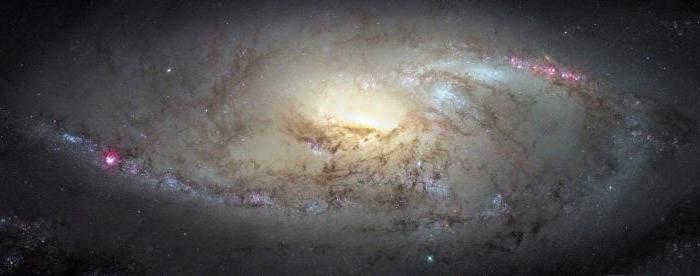
The constellation of Hound Dogs is home to a variety of fascinating celestial formations in addition to its prominent stars. These formations include galaxies, nebulae, and globular clusters. One notable example is M51, a galaxy known as the Whirlpool. Located approximately 23 million light years away from Earth, the Whirlpool galaxy is unique in that it consists of two separate galaxies. The larger galaxy, NGC 5194, exhibits a distinct spiral structure, with one of its arms interacting with the companion galaxy NGC 5195.
Video
Exploring the M3 Globular Cluster
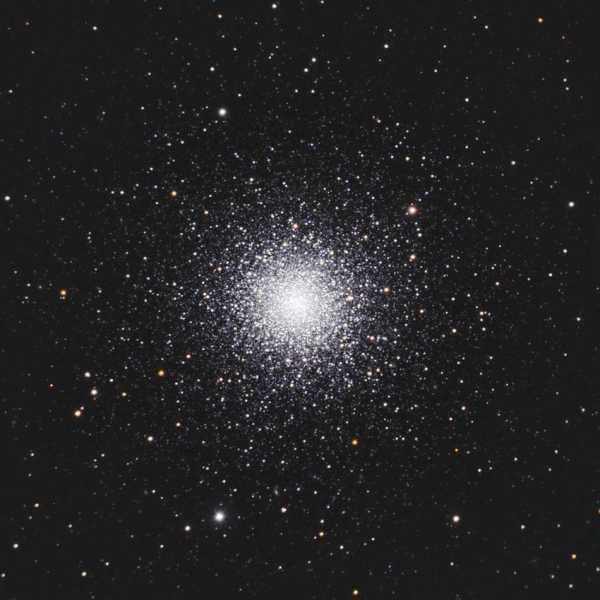
NGC 5272 amateur image
The constellation Canes Venatici is well-known for its celestial objects, like the globular cluster M3 or NGC 5272, which is a massive cluster known for being the brightest in its class. It is located between the constellations Boötes and Coma Berenices.
Furthermore, you were observing the photograph MESSENGER of ice found in craters on the surface of the planet Mercury.
The immediate vicinity of the star
The star system list below is located within a 10 light-year radius from β Hound Dog
| Star | Spectral class | Distance, light-years |
| BD+36 2219 | M1 Ve / ? | 5.0 |
| Groombridge 1830 | G8 VIp | 5.0 |
| G 122-49 | M V | 5.1 |
| 61 of the Big Dipper | G8 Ve | 7.4 |
| β Veronica’s Hair | F9.5-G0 V | 8.1 |
| Ross 1015 | M3 V | 8.2 |
| Alula South | G0 Ve / G0 Ve | 8.5 |
| BD+48 2108 | K0-1.5 V / ? / ? | 8.6 |
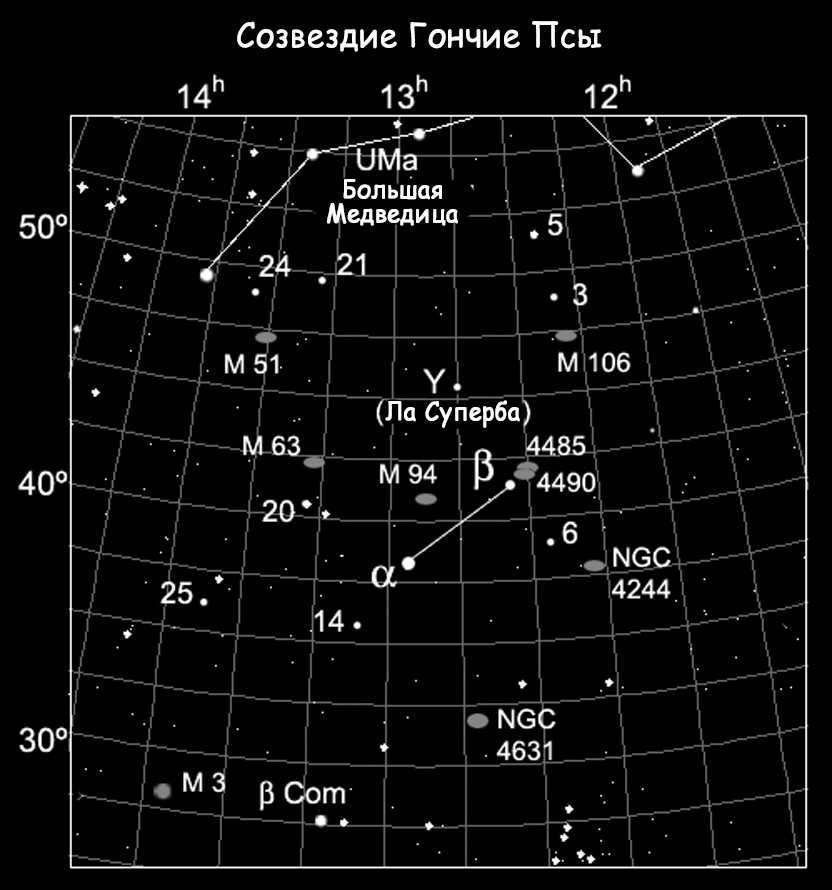
The constellation known as Canes Venatici is situated in the northern hemisphere and was first described in detail by the Polish astronomer Johannes Hevelius during the 17th century.
Nocturnal Speedsters
Canes Venatici can be observed in the northern sky and covers a total area of 465 square degrees, making it the 38th largest constellation out of the 88 recognized. This constellation is home to 50 different stars that can be seen without the aid of a telescope.
In Latin, the name of this constellation translates to “Hunting Dogs”. In ancient Greek mythology, Canes Venatici was associated with the dogs Asterion and Chara, who were depicted as being led on a leash by Boötes while hunting the Great and Little Bears.
Before Hevelius, the constellation did not exist, and the stars that make up the constellation were part of Volopassus. Some of these stunning stars formed a massive club in Volopas’ hand.
How can you spot the Hound Dogs in the night sky?
This distinctive constellation is situated near other constellations like the Big Dipper, Veronica’s Hair, and Volopassus. In Russia, it can be seen during the early spring months of March and April.
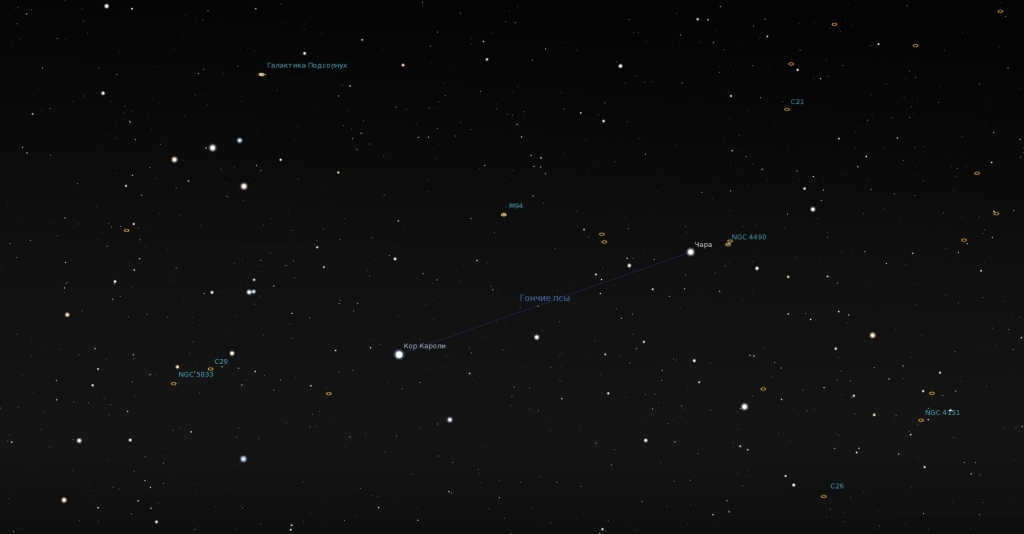
Take a look at the Hound Dog constellation through the planetarium program
The Hound Dogs constellation may not be known for its bright stars or large size, but it can still be easily located in the expansive night sky filled with countless other constellations. All of the stars in the Hound Dogs can fit within the handle of the Big Dipper. By using your finger as a celestial marker and drawing a line from the star Dubhe to the star Fad in the southeast direction, you will be led to the alpha star of the Hound Dogs, Cor Caroli. To the east of Cor Caroli lies the famous star Arcturus in the constellation Capricorn. The Hound Dogs constellation is positioned quite high above the horizon and can be easily observed throughout the country.
The most luminous celestial body
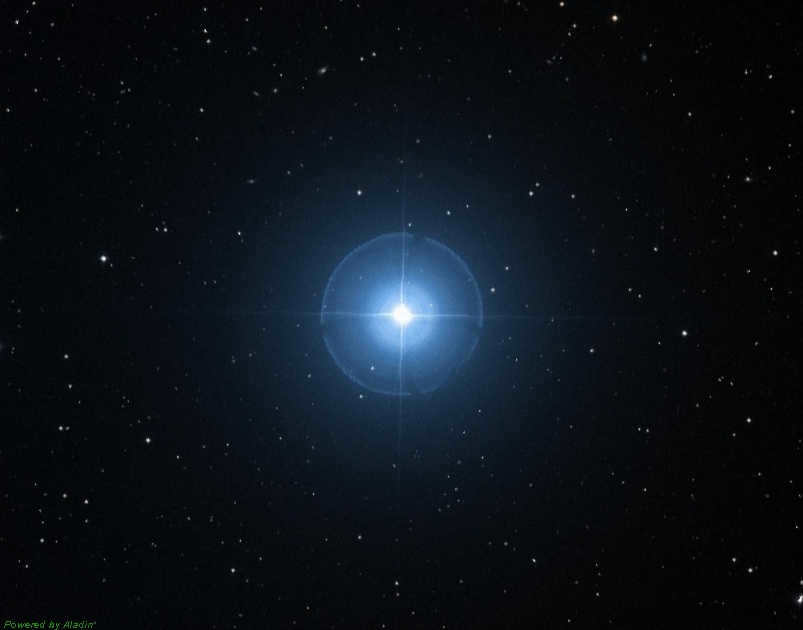
Alpha Hound Dogs, also known as the brightest star of the constellation Cor Caroli, is a remarkable double star with a luminosity of 2.81. It is situated at a distance of 110 light-years from our planet.
The Hound Dog’s Beta Version
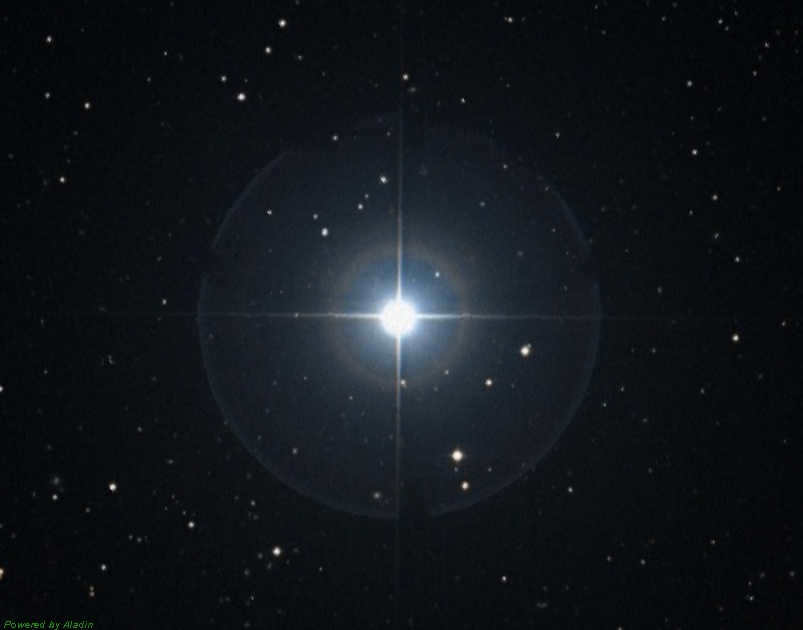
The Hound Dogs constellation is home to Chara, the second brightest star. Chara, also known as Beta of the Hound Dogs, is a G-type dwarf star that bears a striking resemblance to our own Sun.
Y of the Hound Dogs
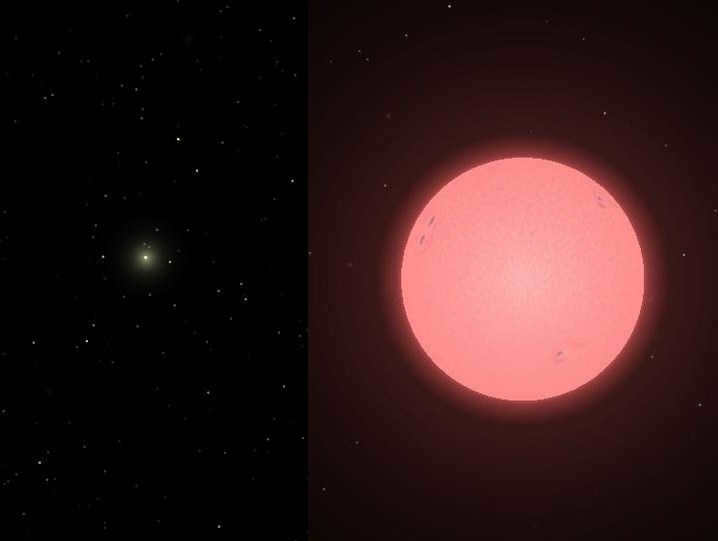

Y of the Hound Dogs can be observed from a distance of 25 astronomical units using a computer model in the Celestia program.
Y of the Hound Dogs is classified as a variable star and is known for its distinctive and vibrant red glow. It is considered one of the brightest carbon giants and the brightest star of the J-type category (J-group stars belong to the high carbon-13 class of stars). With a temperature of 2800 K, Y of the Hound Dogs is one of the coldest stars in existence. Surrounding this star is a nebula composed of ejected stellar matter, which spans approximately two and a half light-years. Y of the Hound Dogs was first discovered by the renowned Italian astronomer Angelo Secchi during the nineteenth century.
Other performers featured in Hound Dog
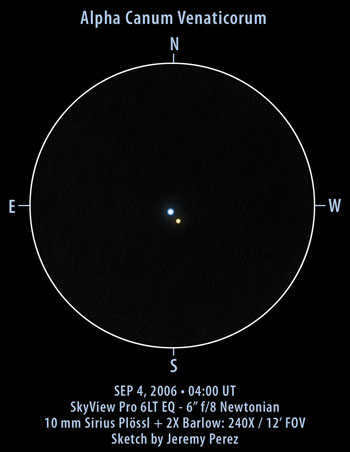
Canum Venaticorum, amateur image
AM Canum Venaticorum and 20 Canum Venaticorum are two additional fascinating stars found in this constellation. The former is classified as a giant star and exhibits variable luminosity, meaning it irregularly increases in brightness several times before sharply decreasing.
The latter star is a yellow-white F-class star situated approximately 286 light-years away from Earth. Like AM Canum Venaticorum, it is also variable in nature.
M3 Globular Cluster
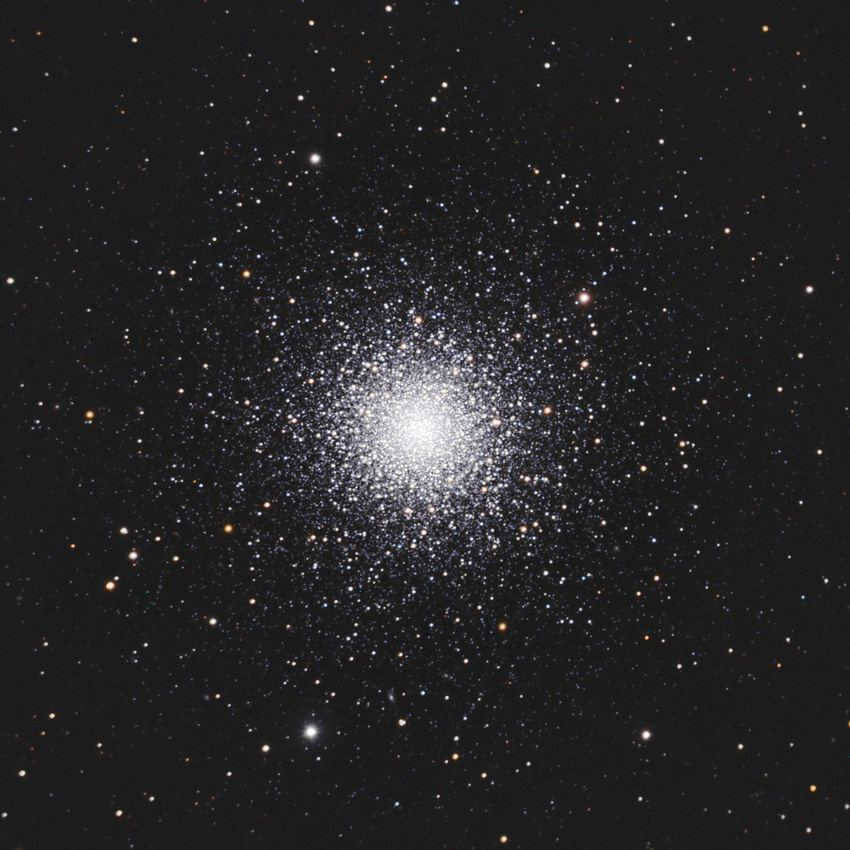
Image of NGC 5272 taken by an amateur astronomer
The constellation Canes Venatici is renowned for its celestial objects, such as the magnificent globular cluster M3 or NGC 5272 – an immense cluster that is considered the most brilliant in its category. It is situated between the constellations Boötes and Coma Berenices.
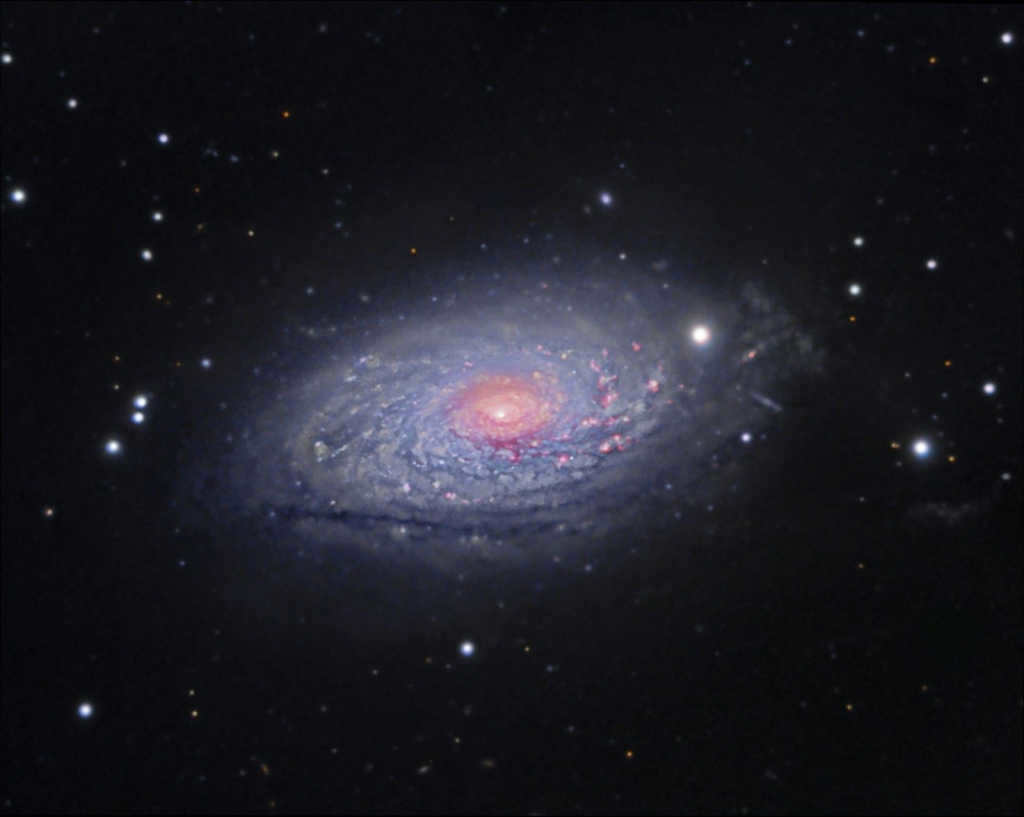
Image of M63 or NGC 5055 – Sunflower galaxy
The Sunflower galaxy, also known as M63, is a vibrant spiral galaxy with a compact core. Situated amidst M51 and Cor Caroli, it shines brightly in the night sky.
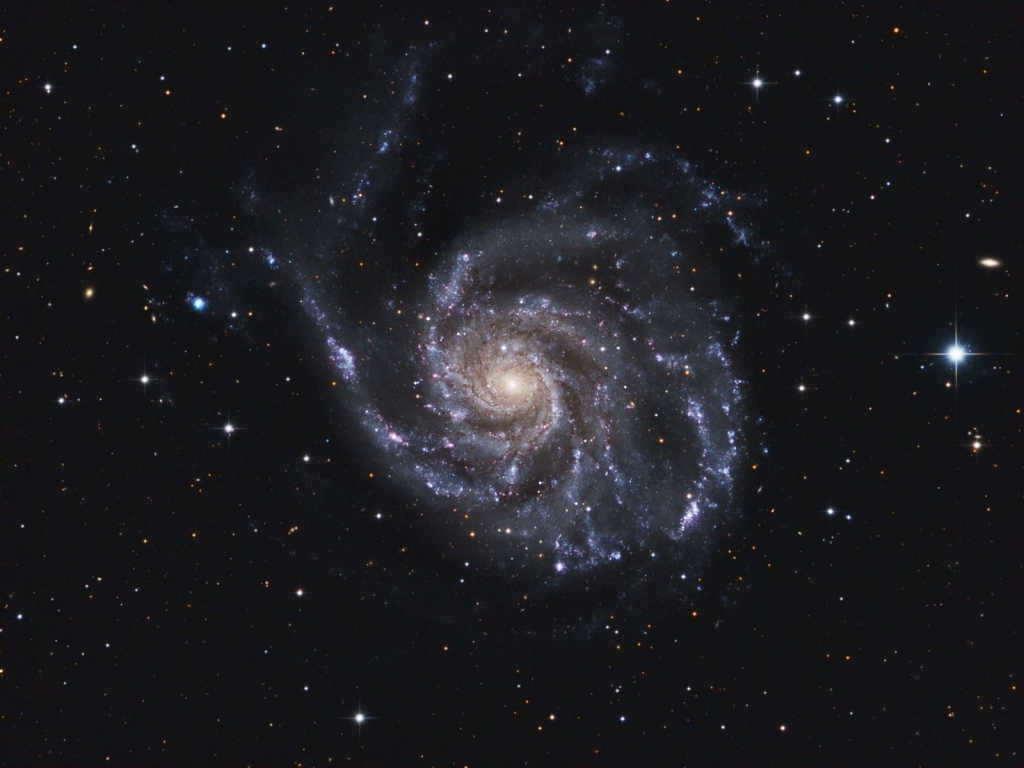
The constellation Hound Dogs is home to the spiral galaxies, one of which is Galaxy M101, situated close to beta star.
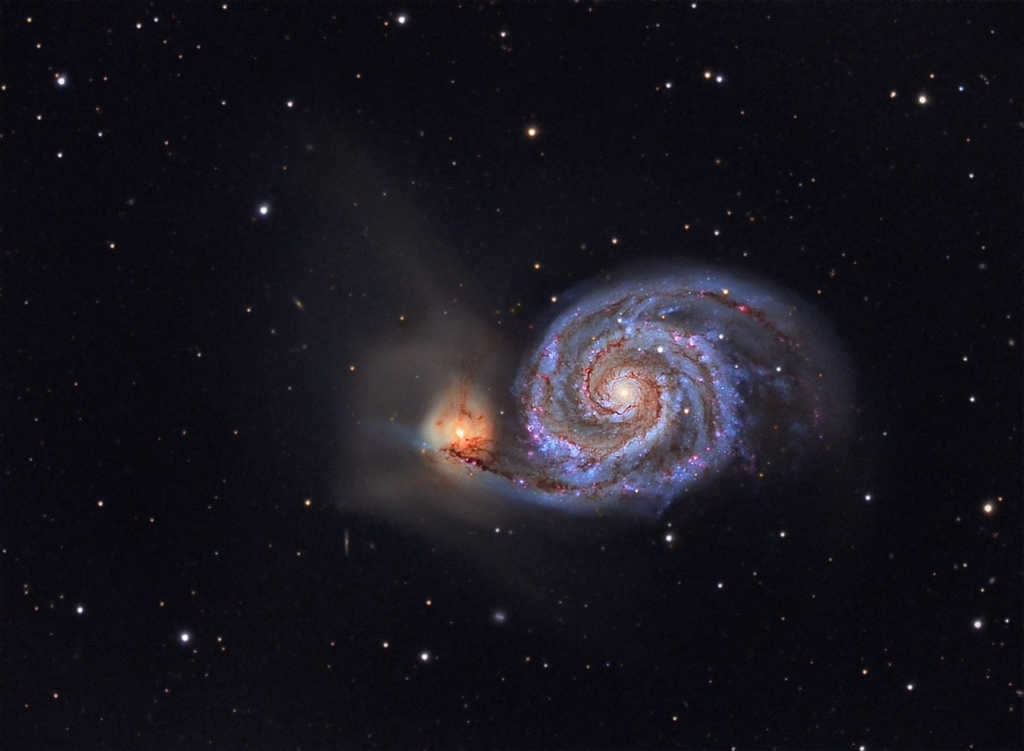
Photograph of the Whirlpool galaxy, also known as M51.
Located within this constellation are the renowned Whirlpool Galaxy or M51 – a pair of spiral galaxies.
A brief historical background
Jan Hevelius’ constellation atlas depicted the Hound Dogs constellation as two dogs gazing at the Big Dipper. Consequently, Capricorn is seen as pitting his dogs against the Big Dipper. In 1493, a German astronomer and cartographer included a similar illustration in his star atlas, but his Hound Dogs were part of the Volopassus constellation.
